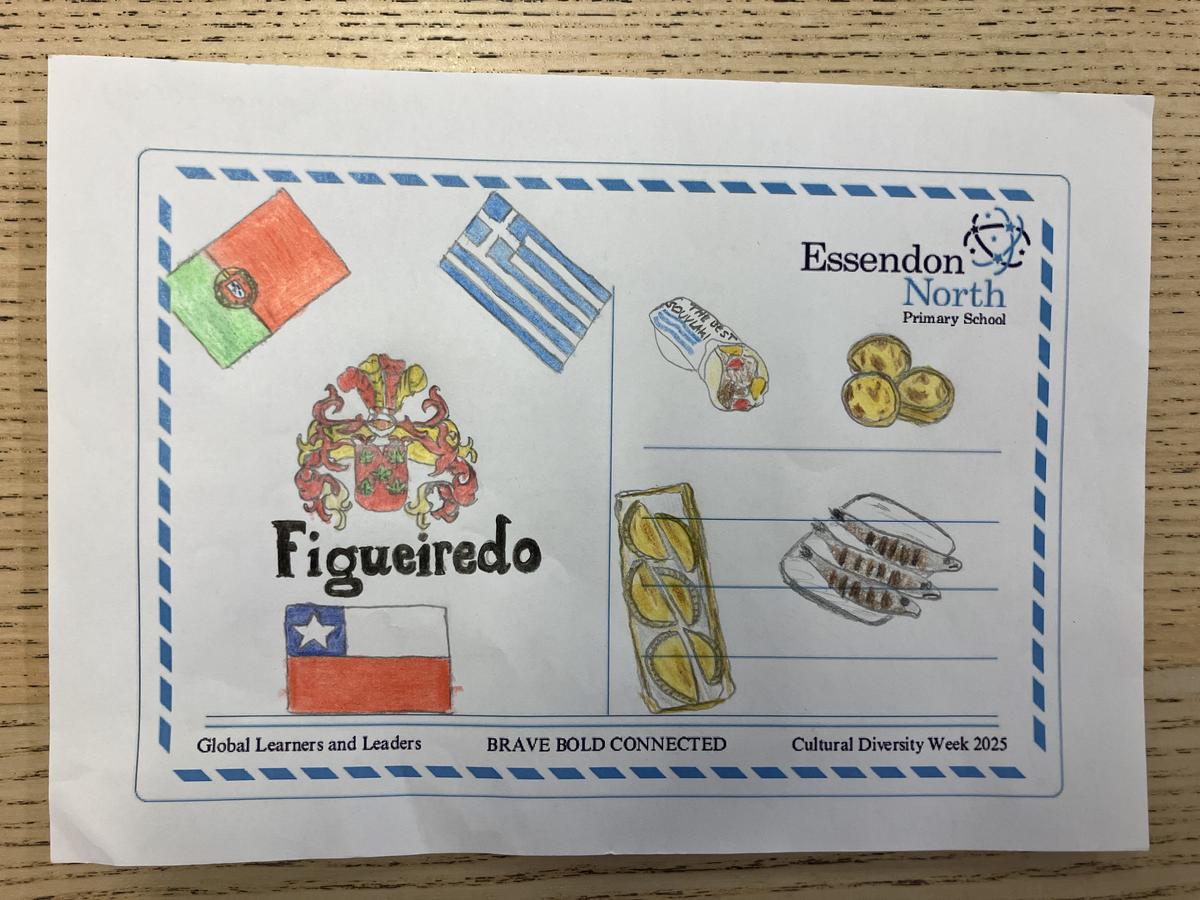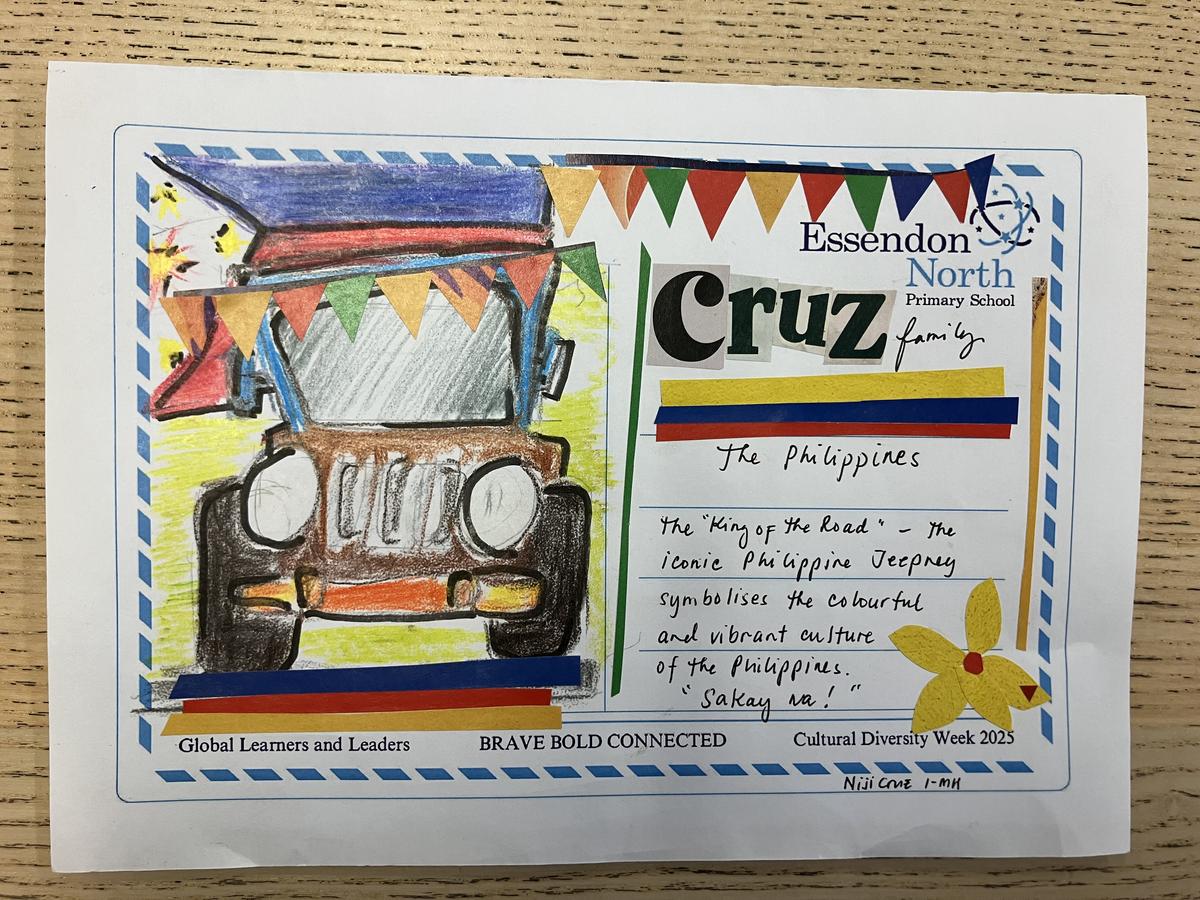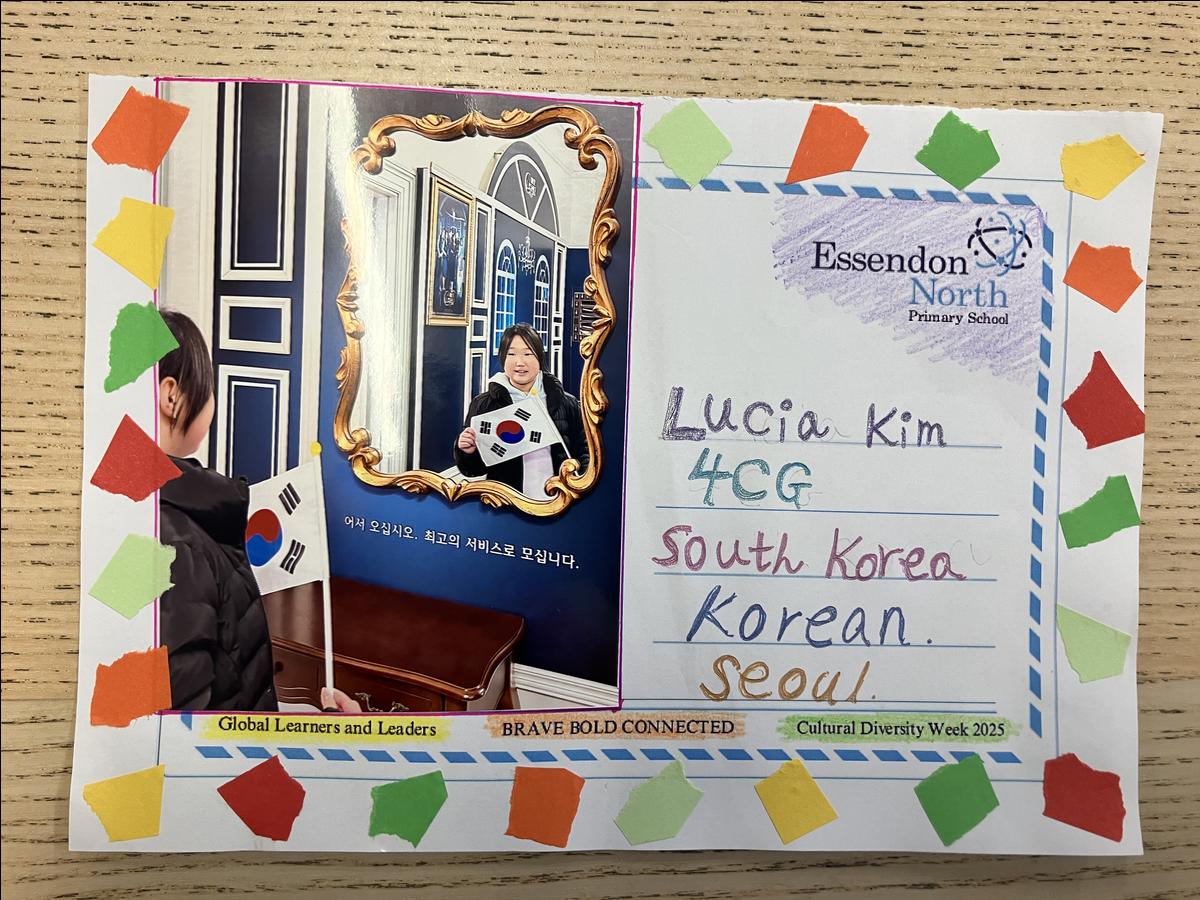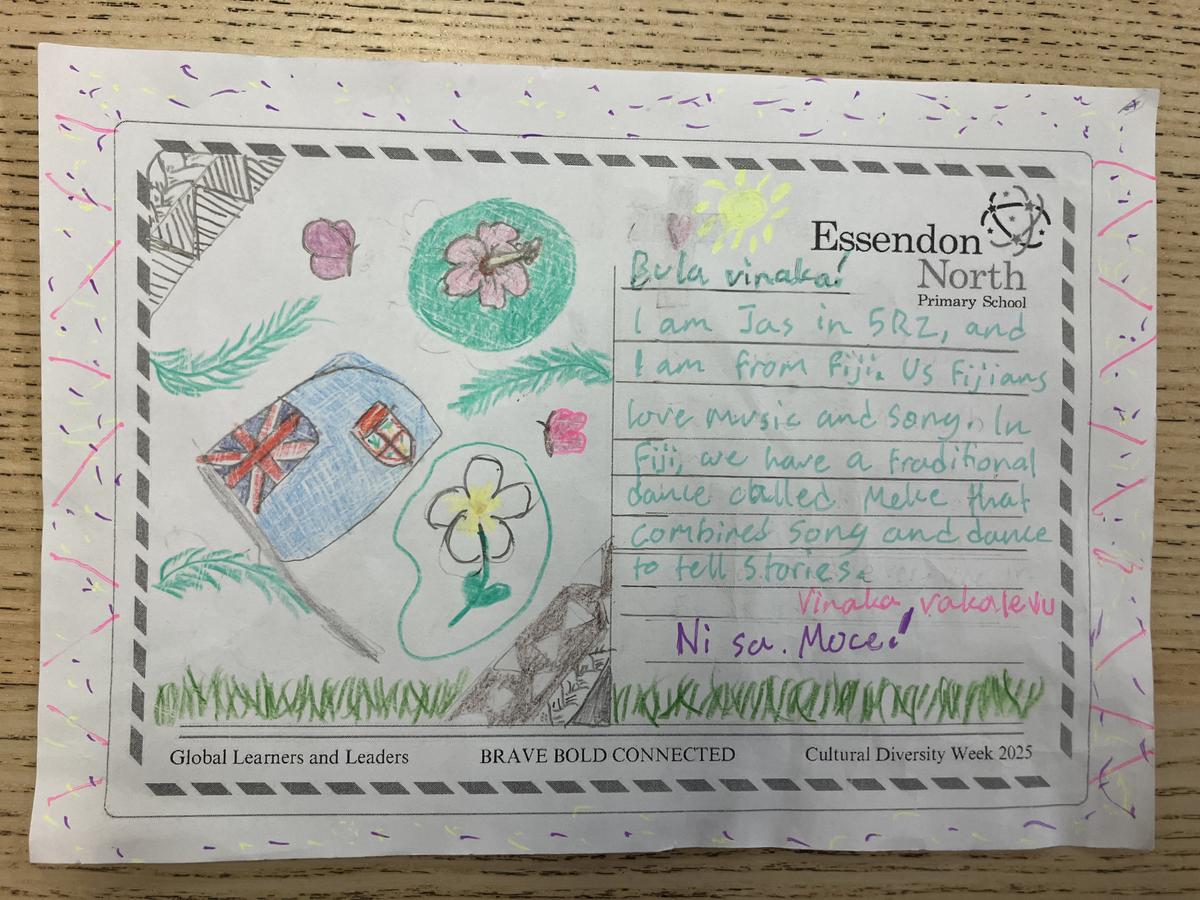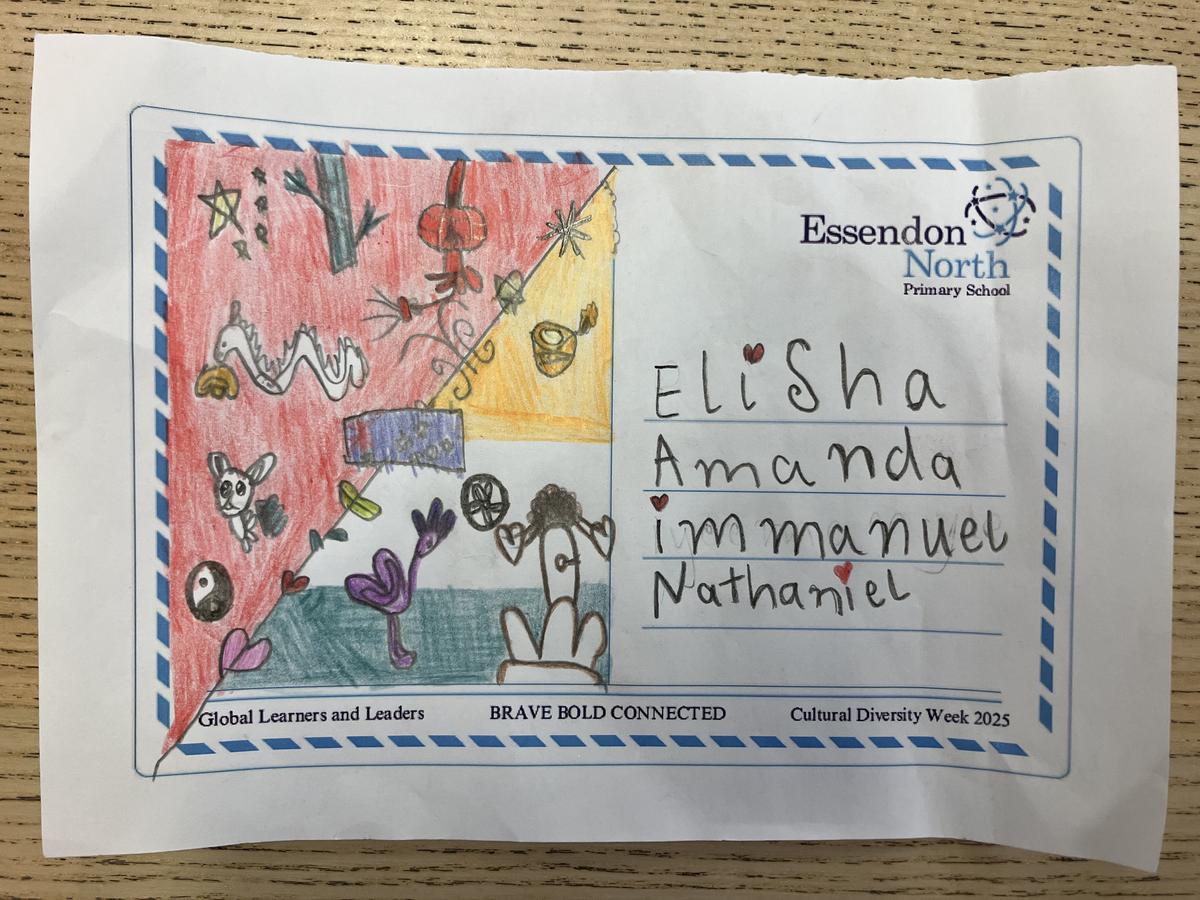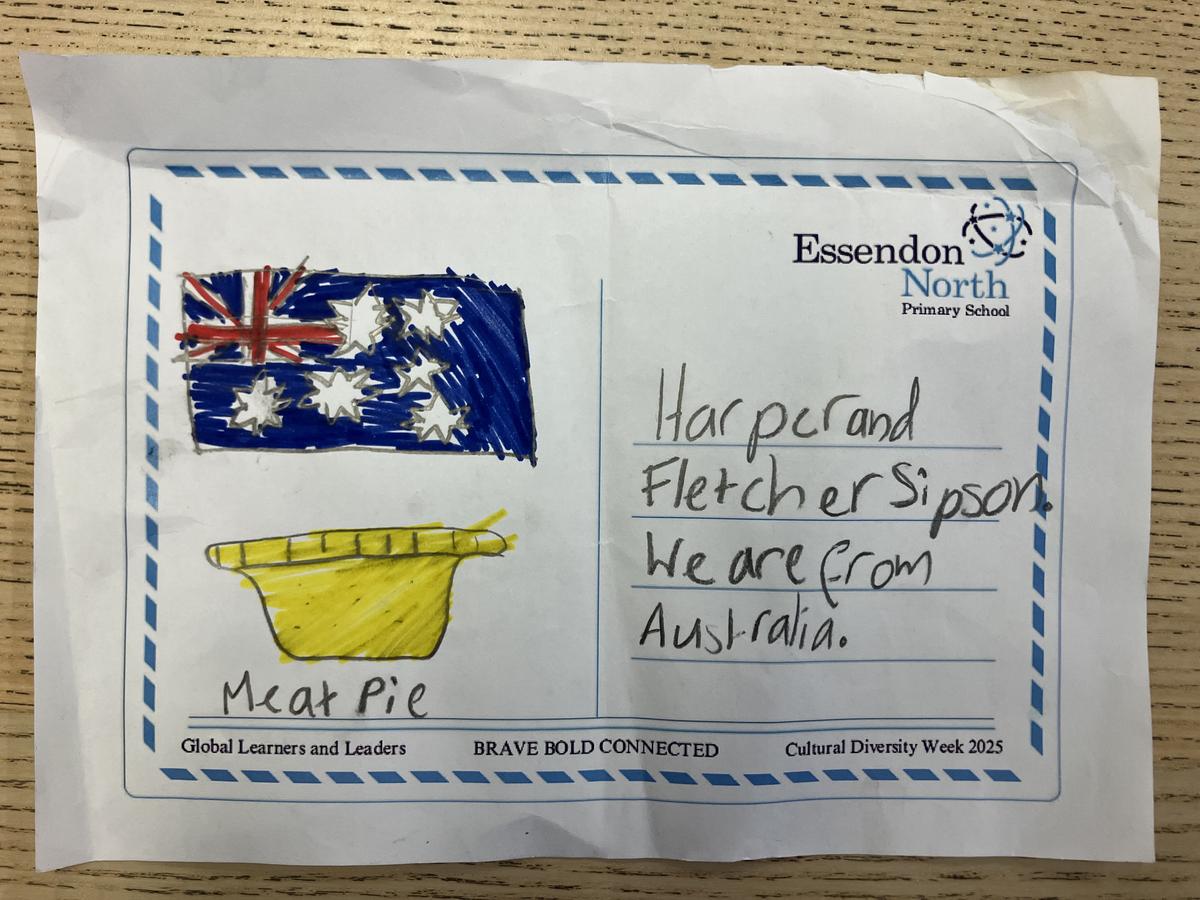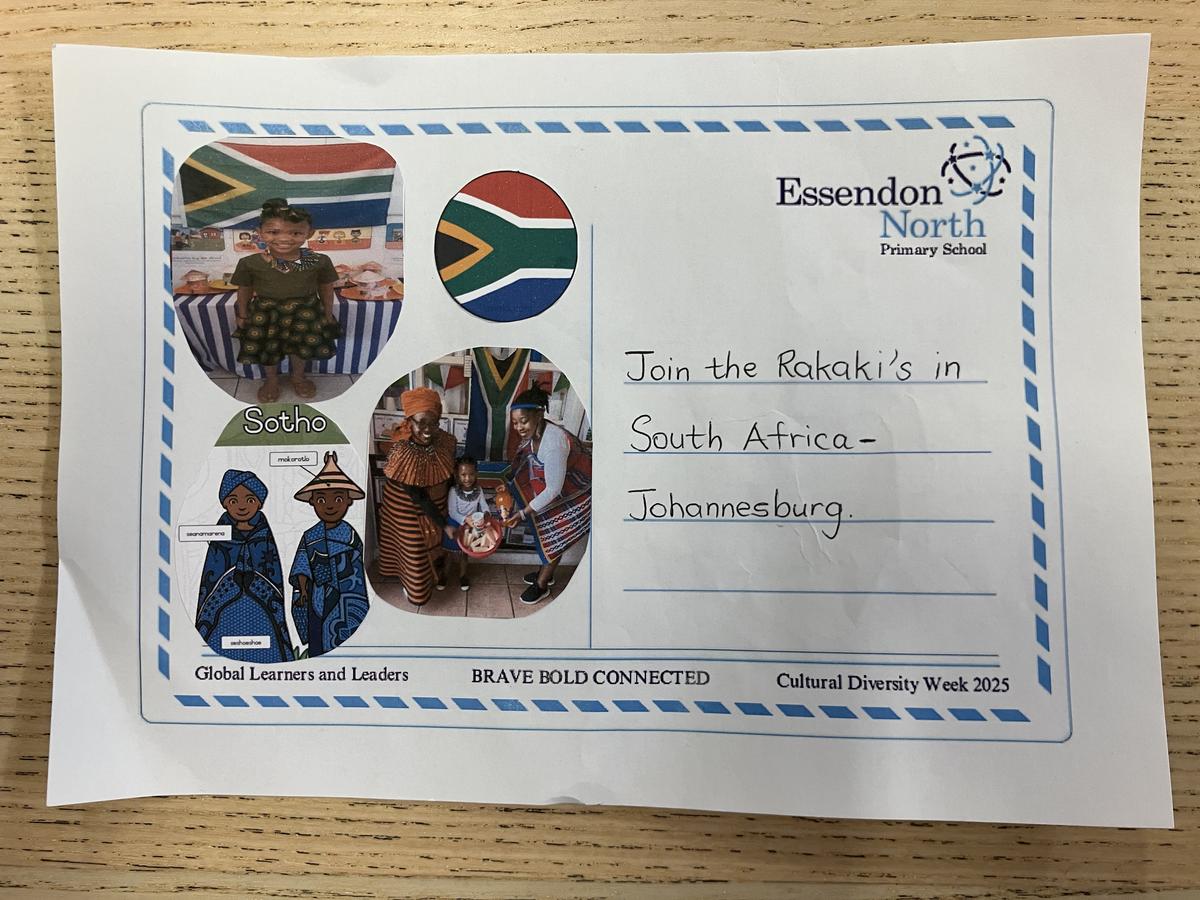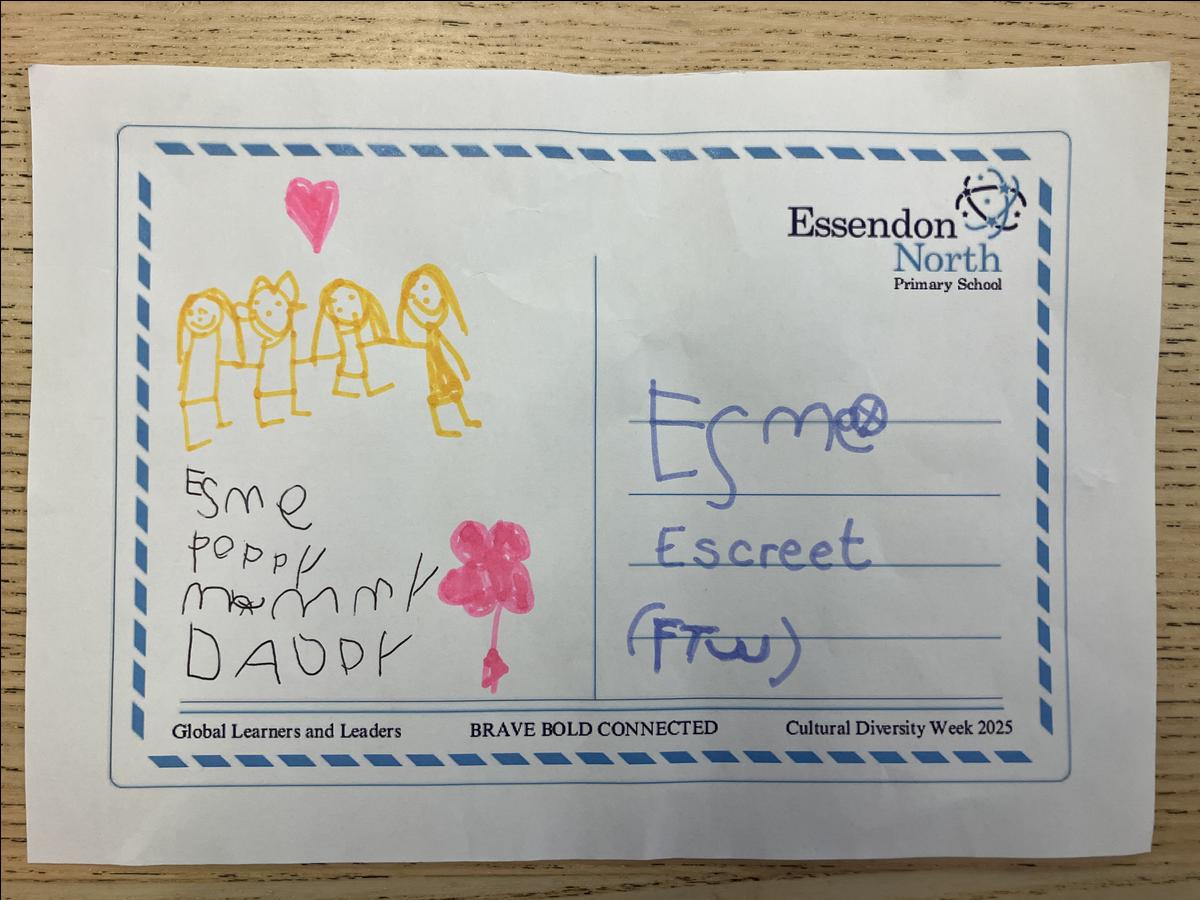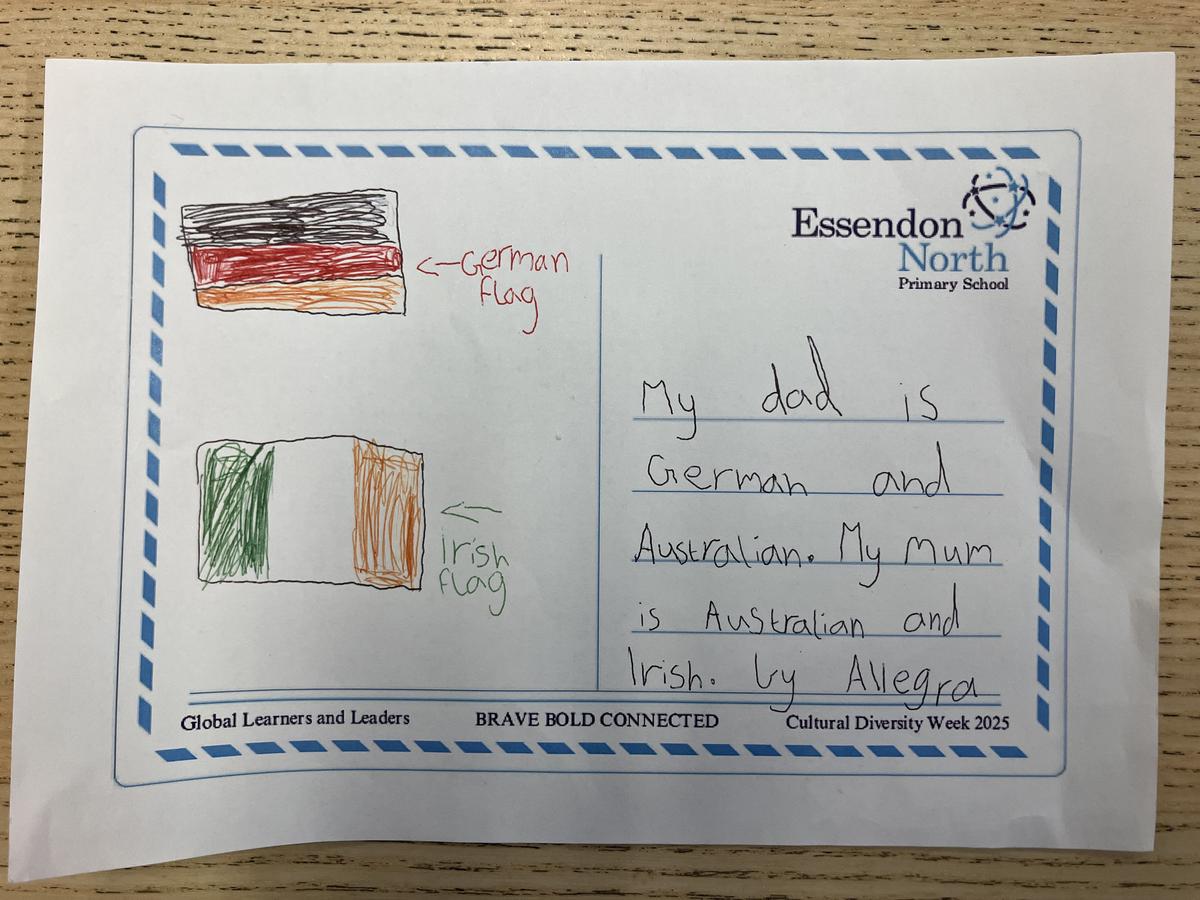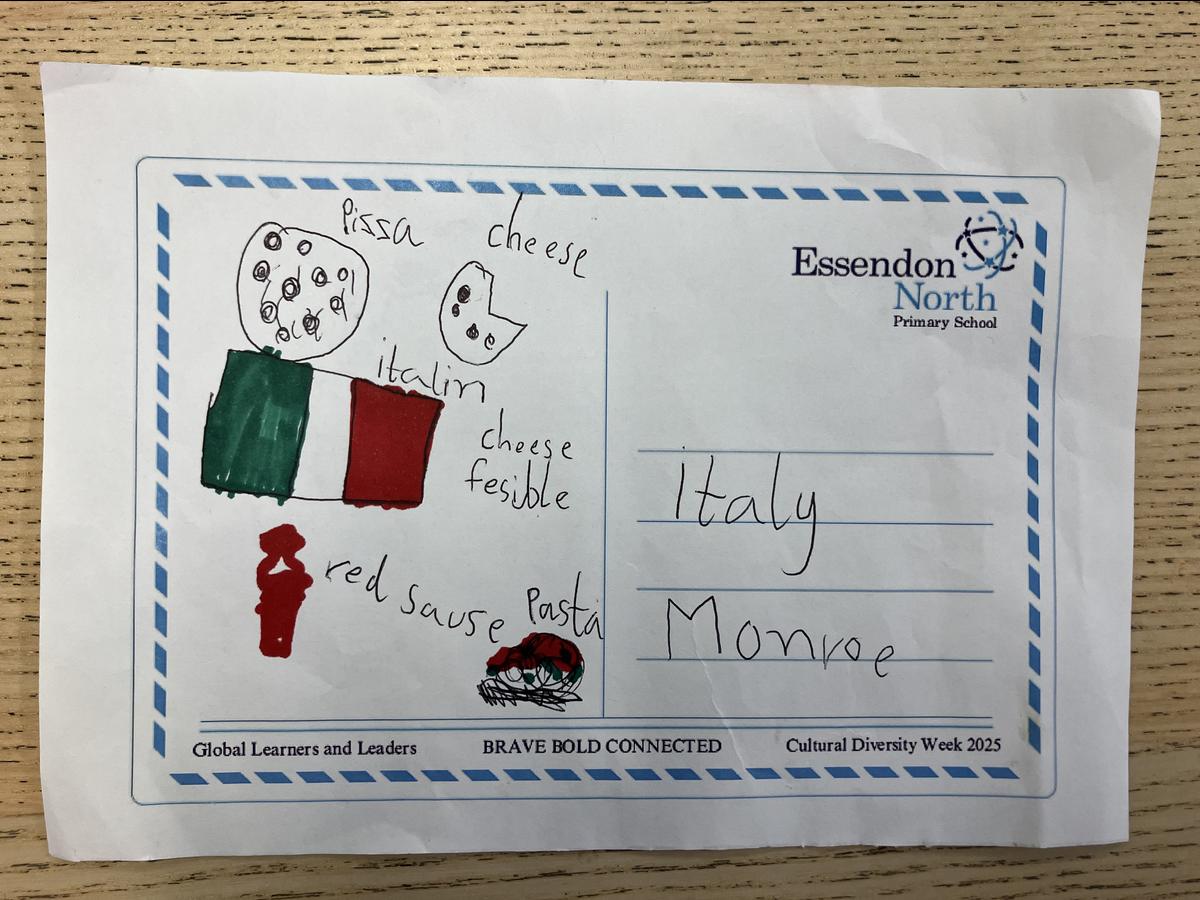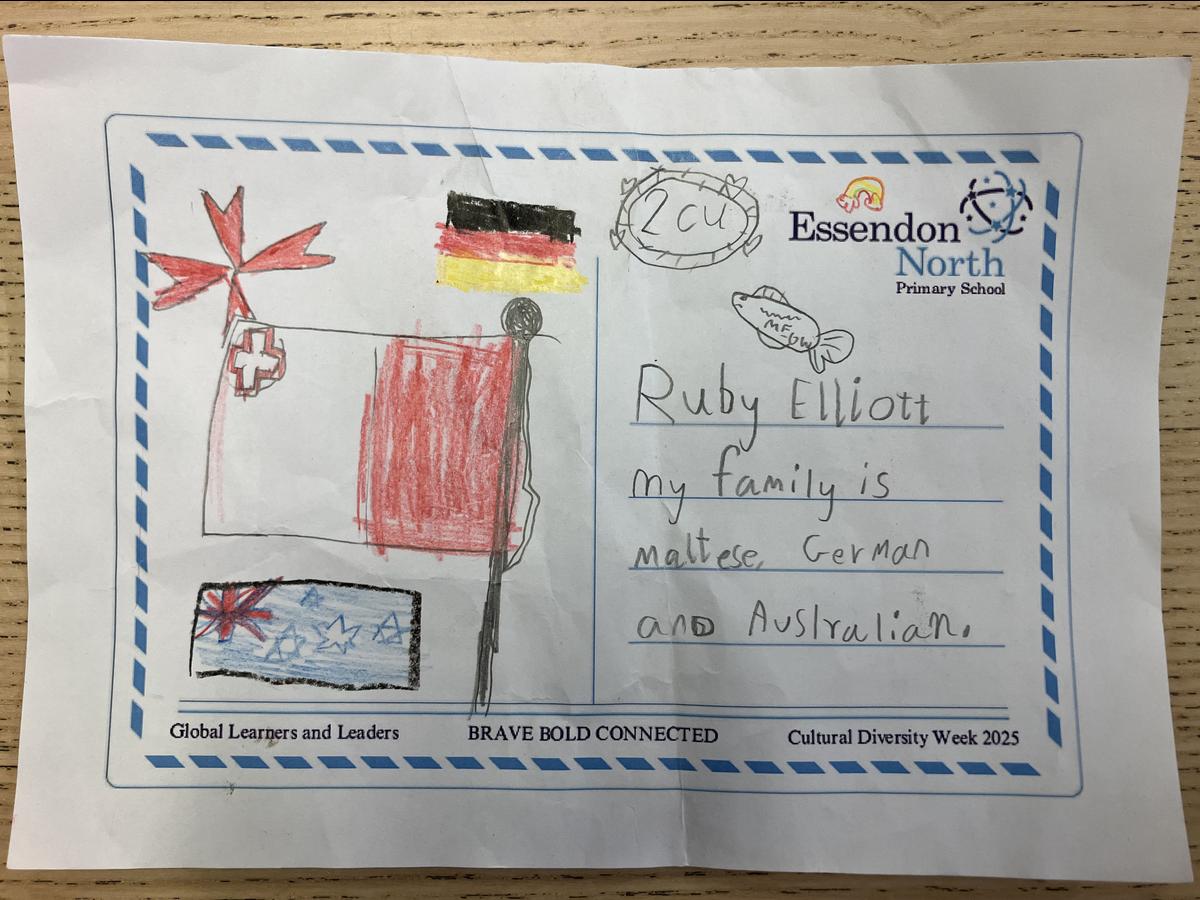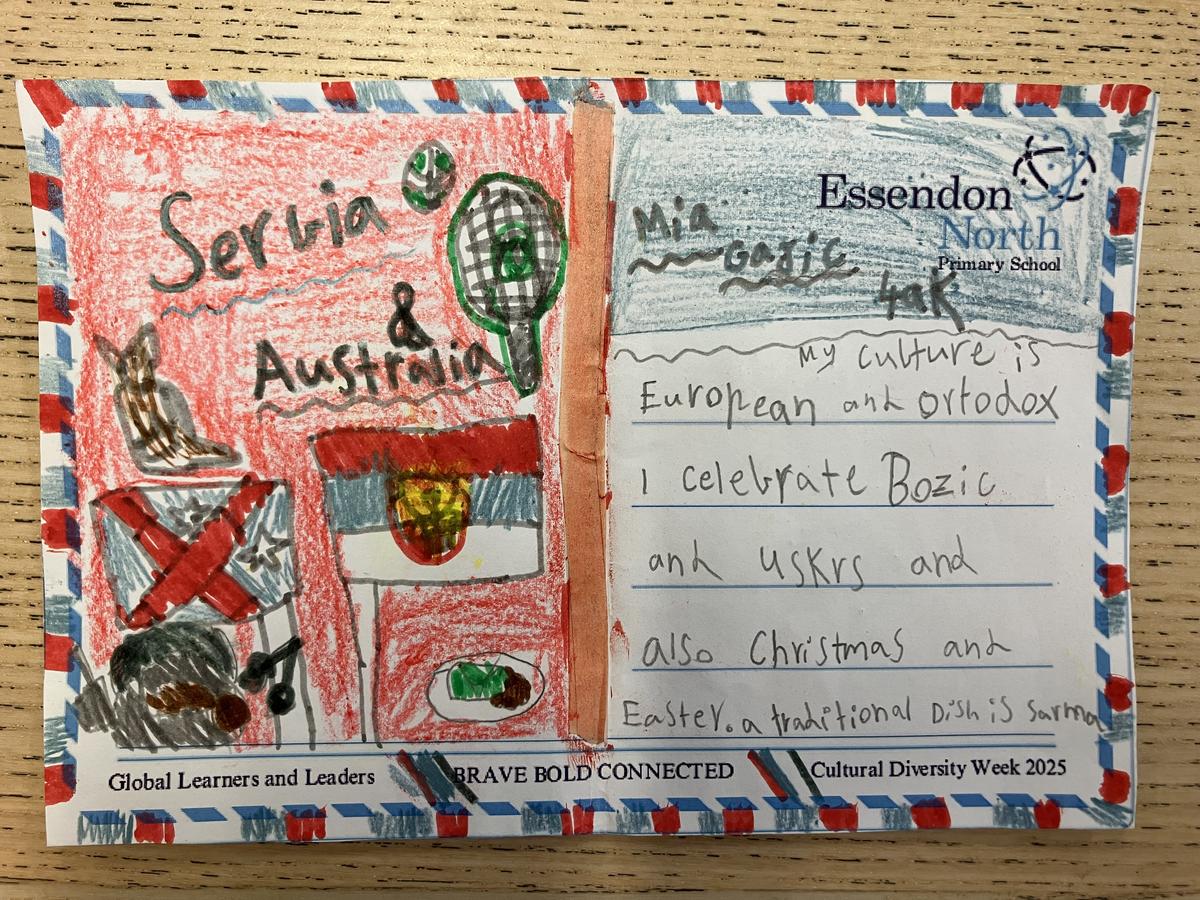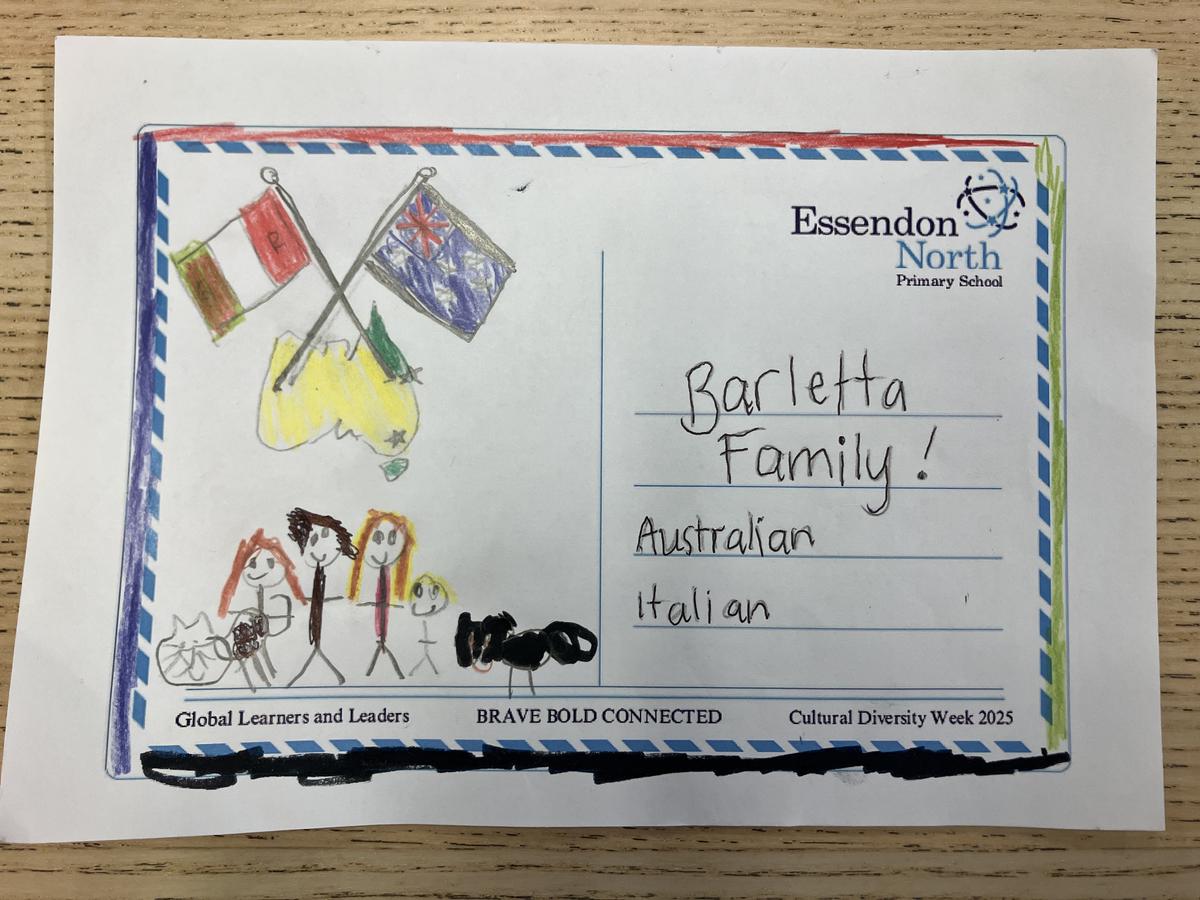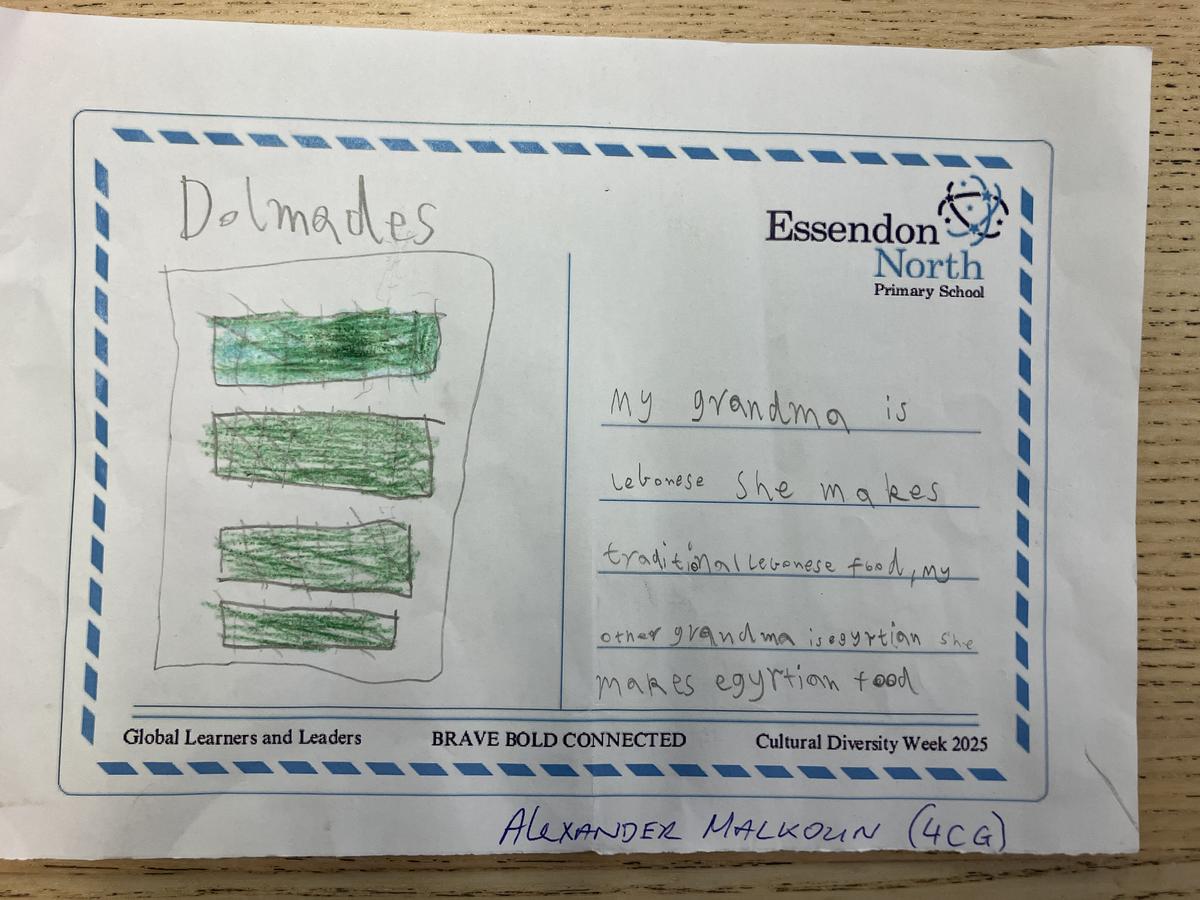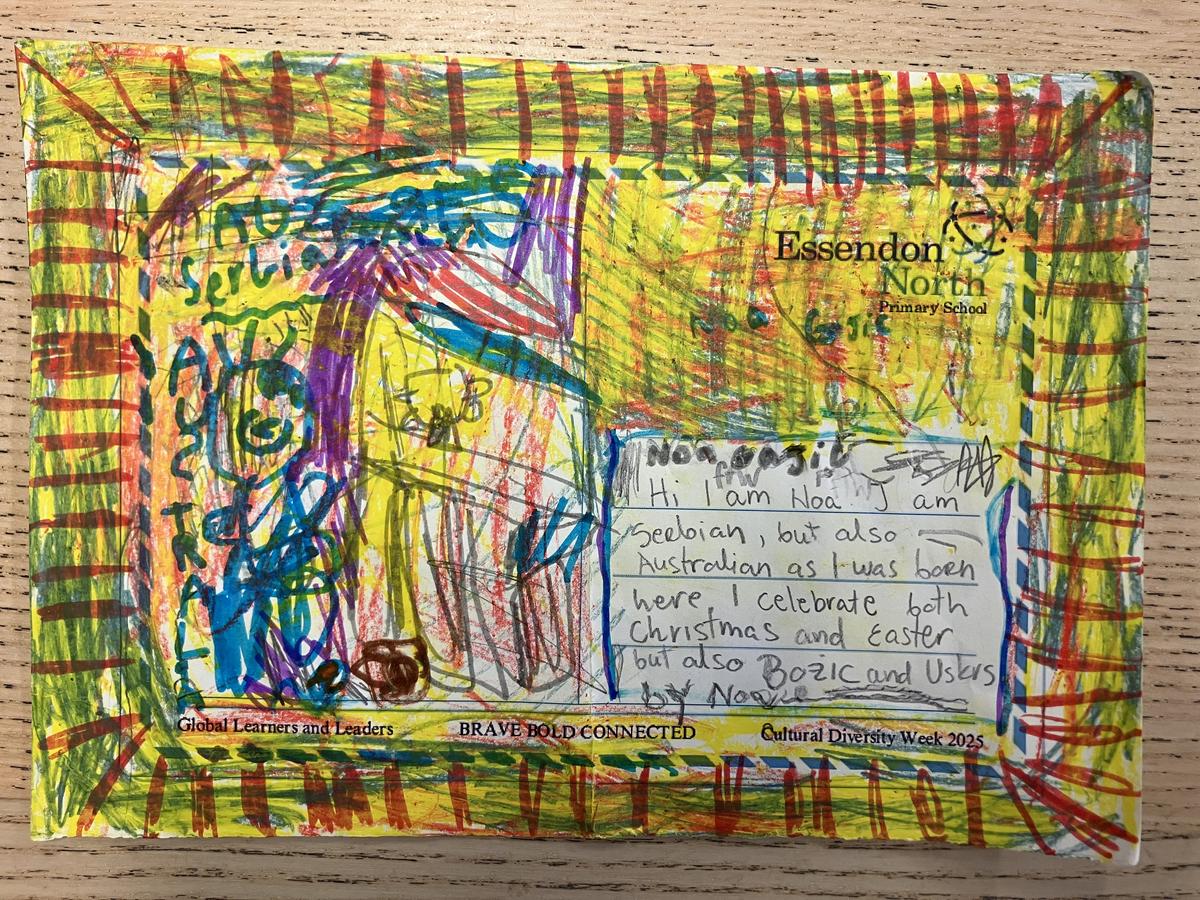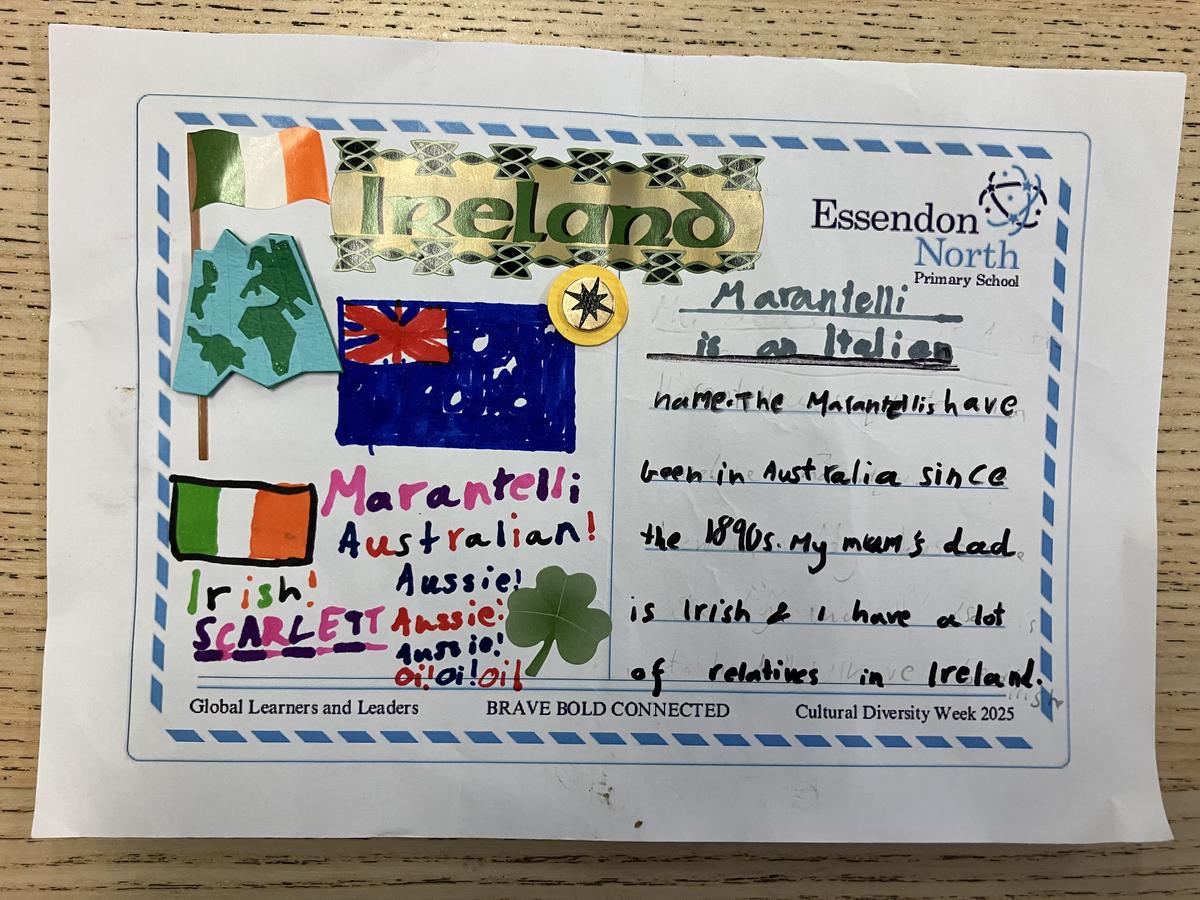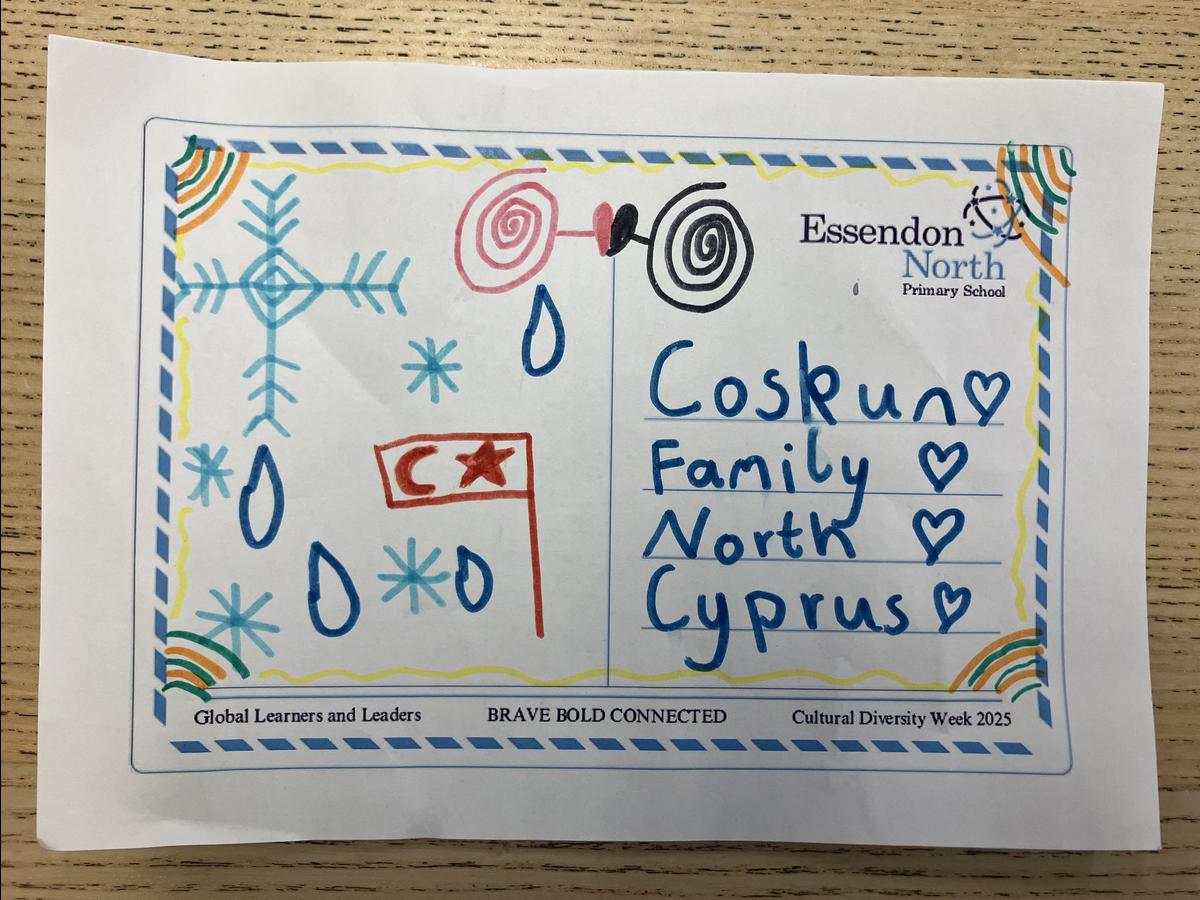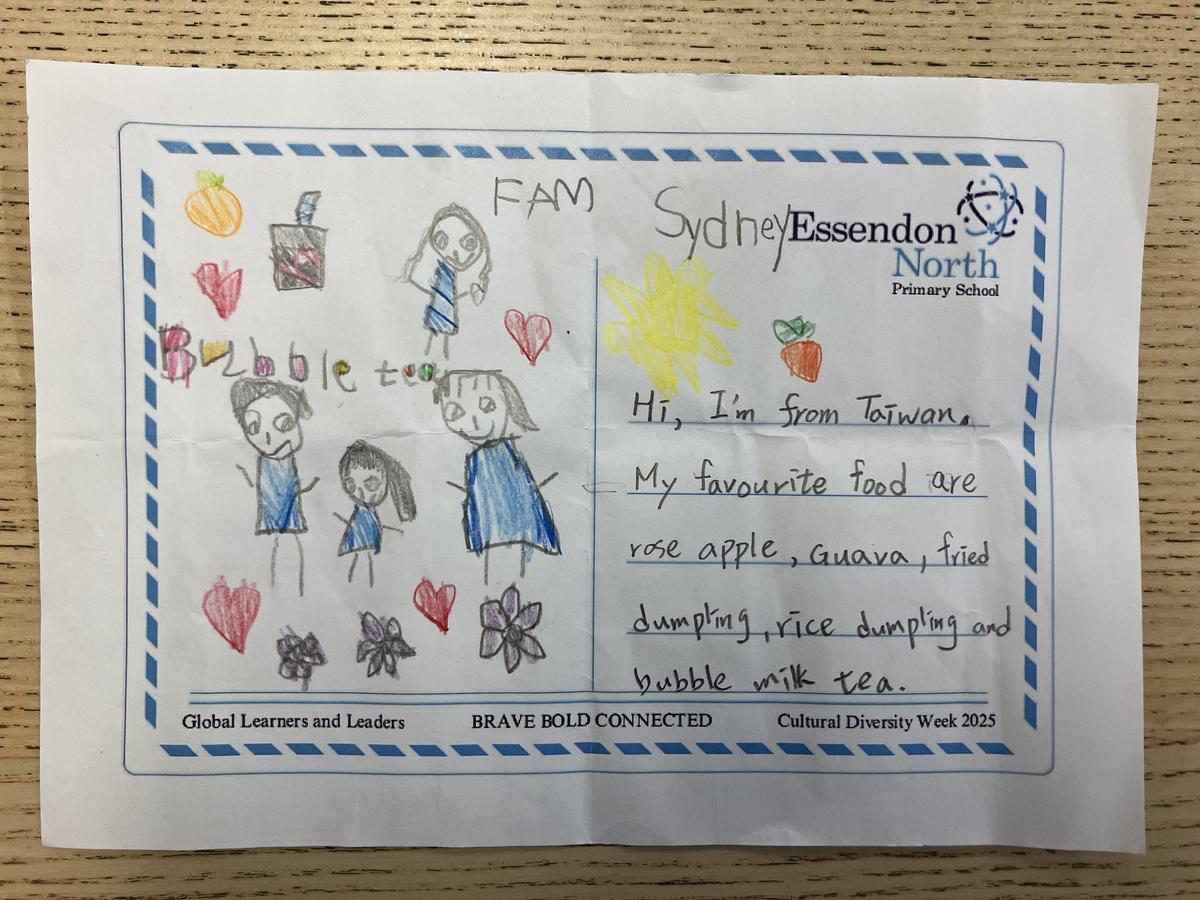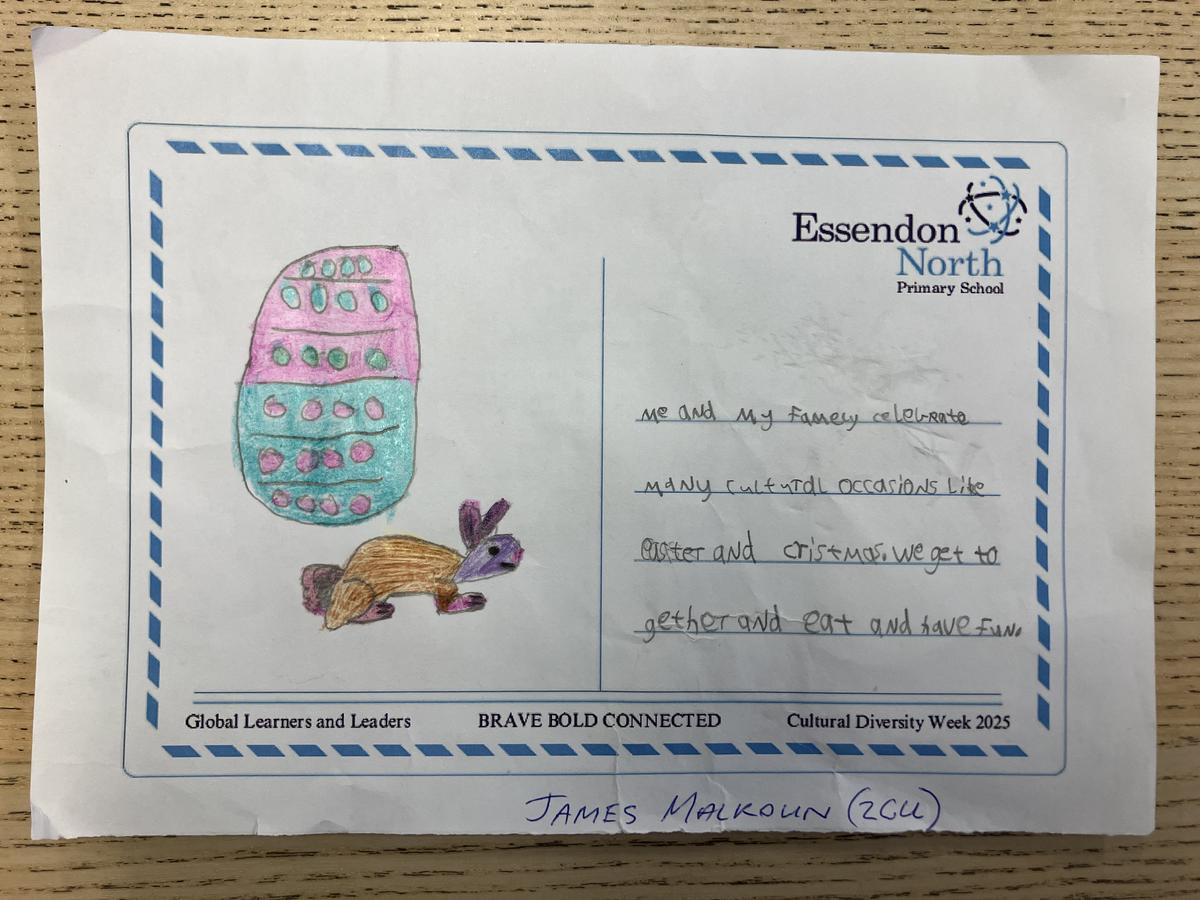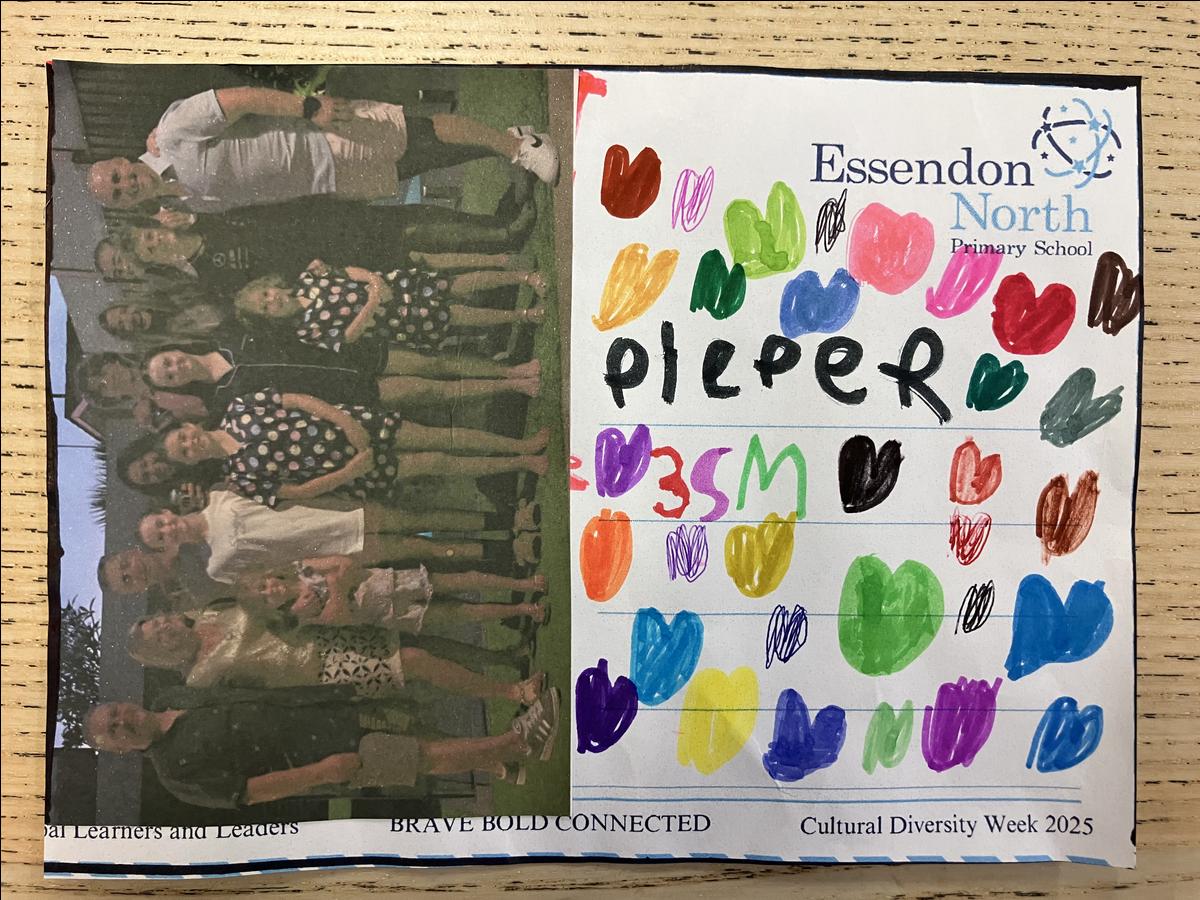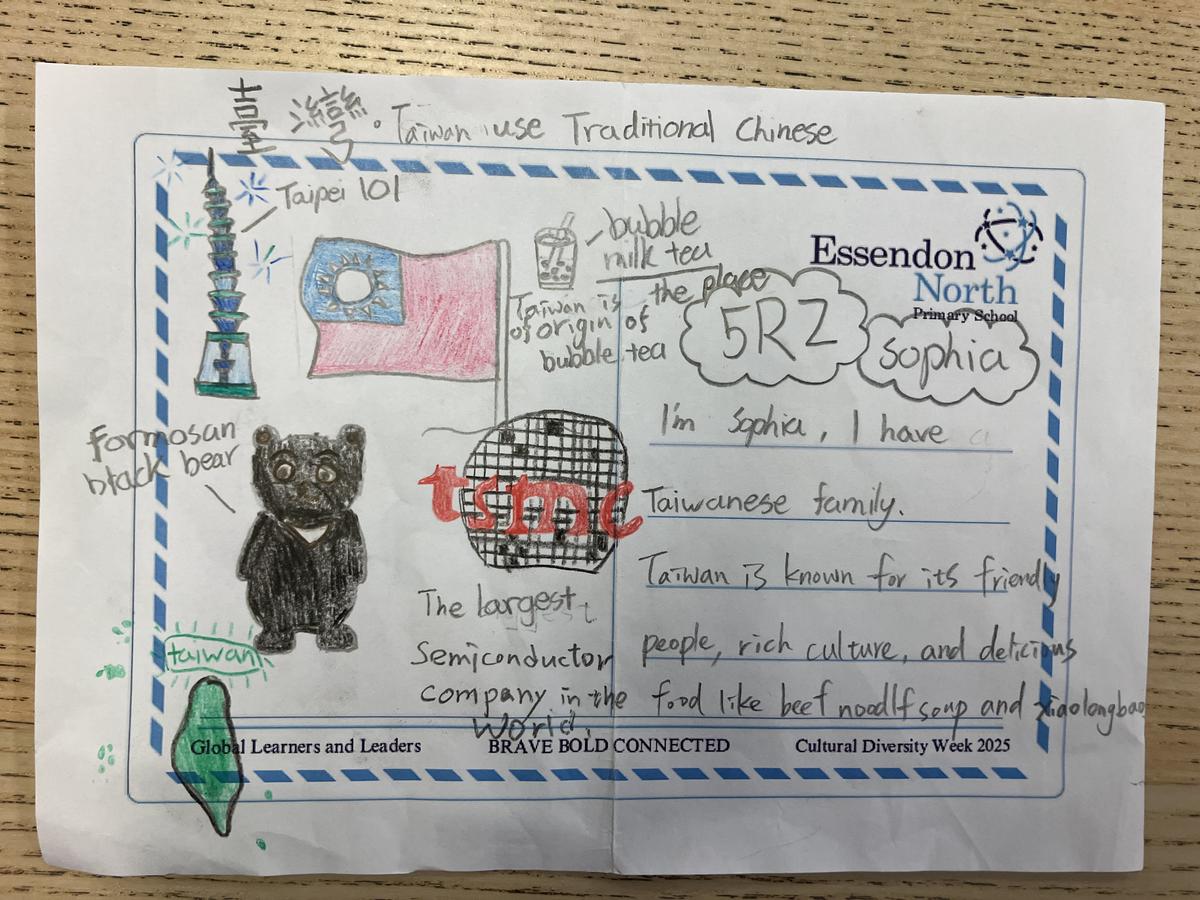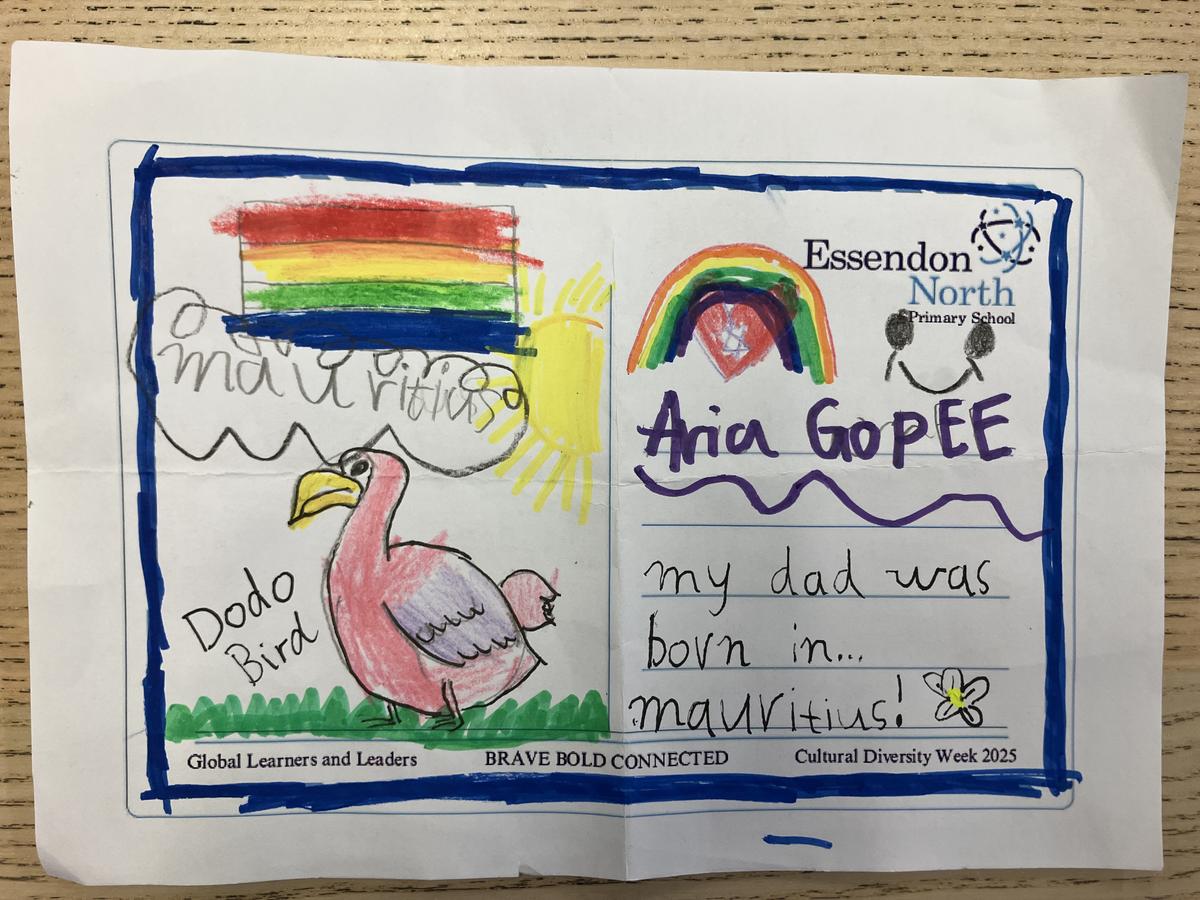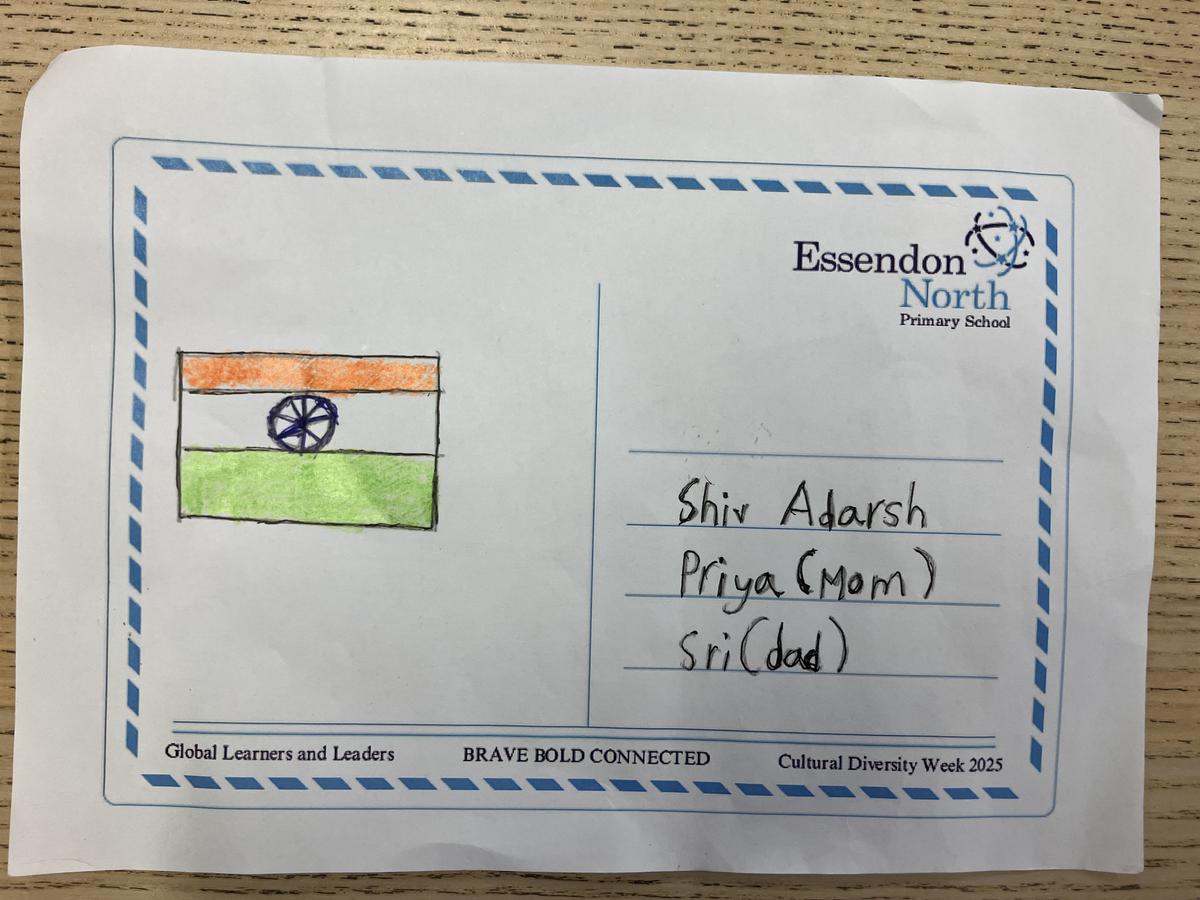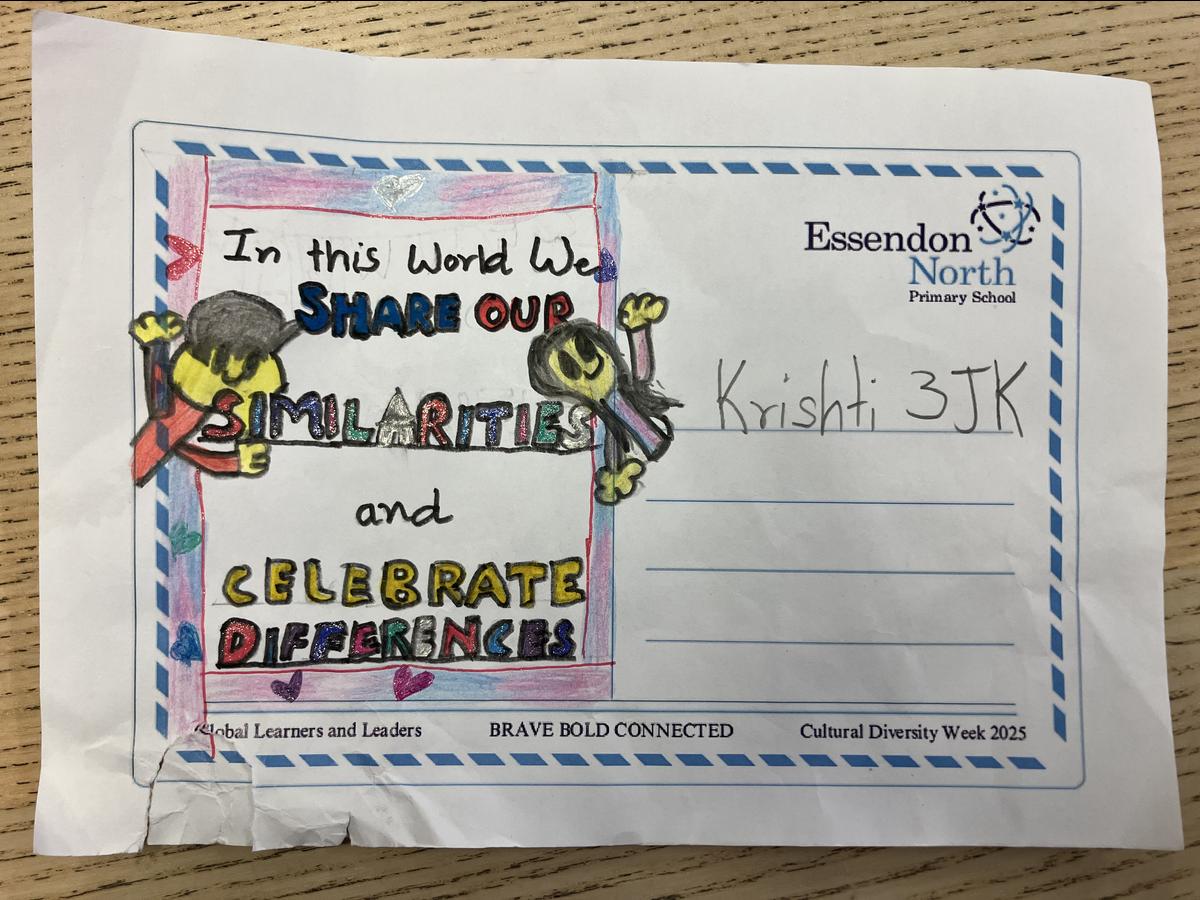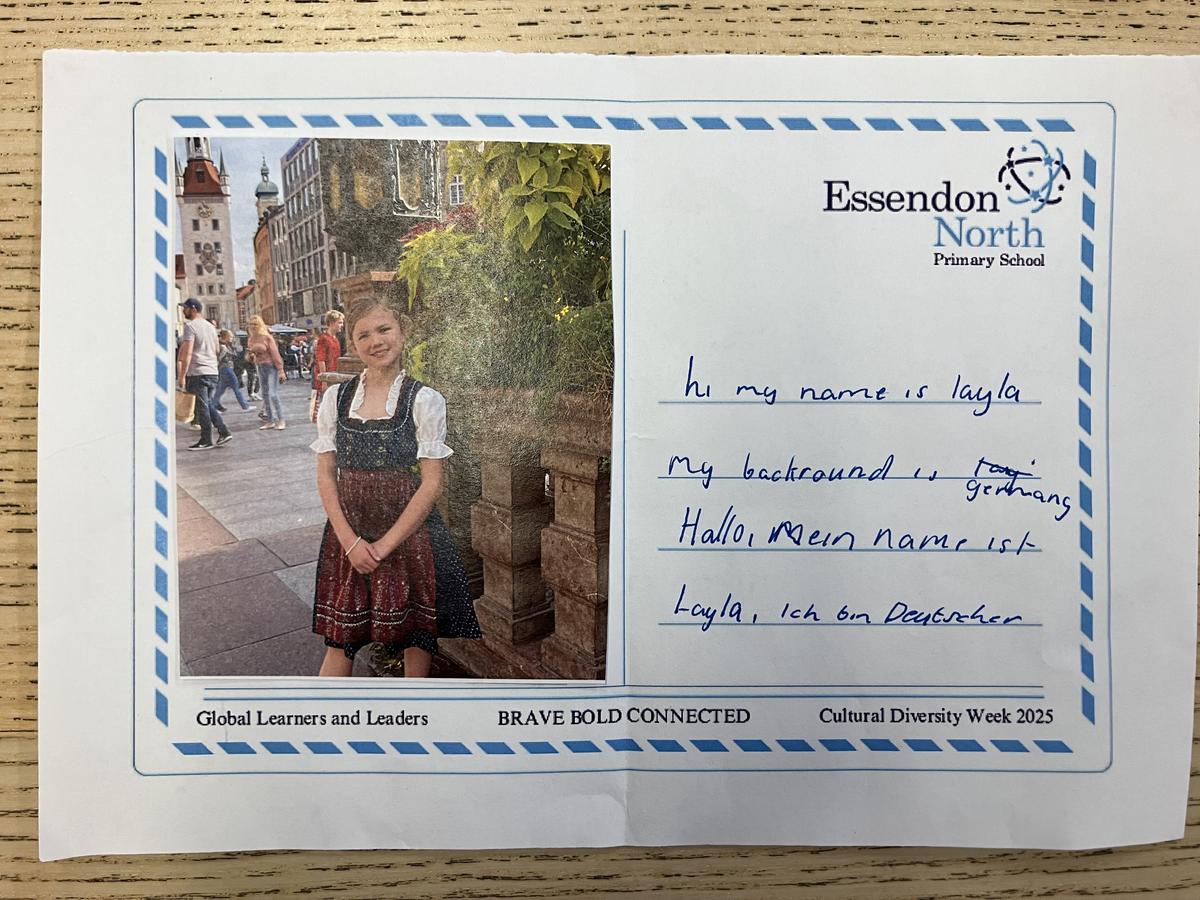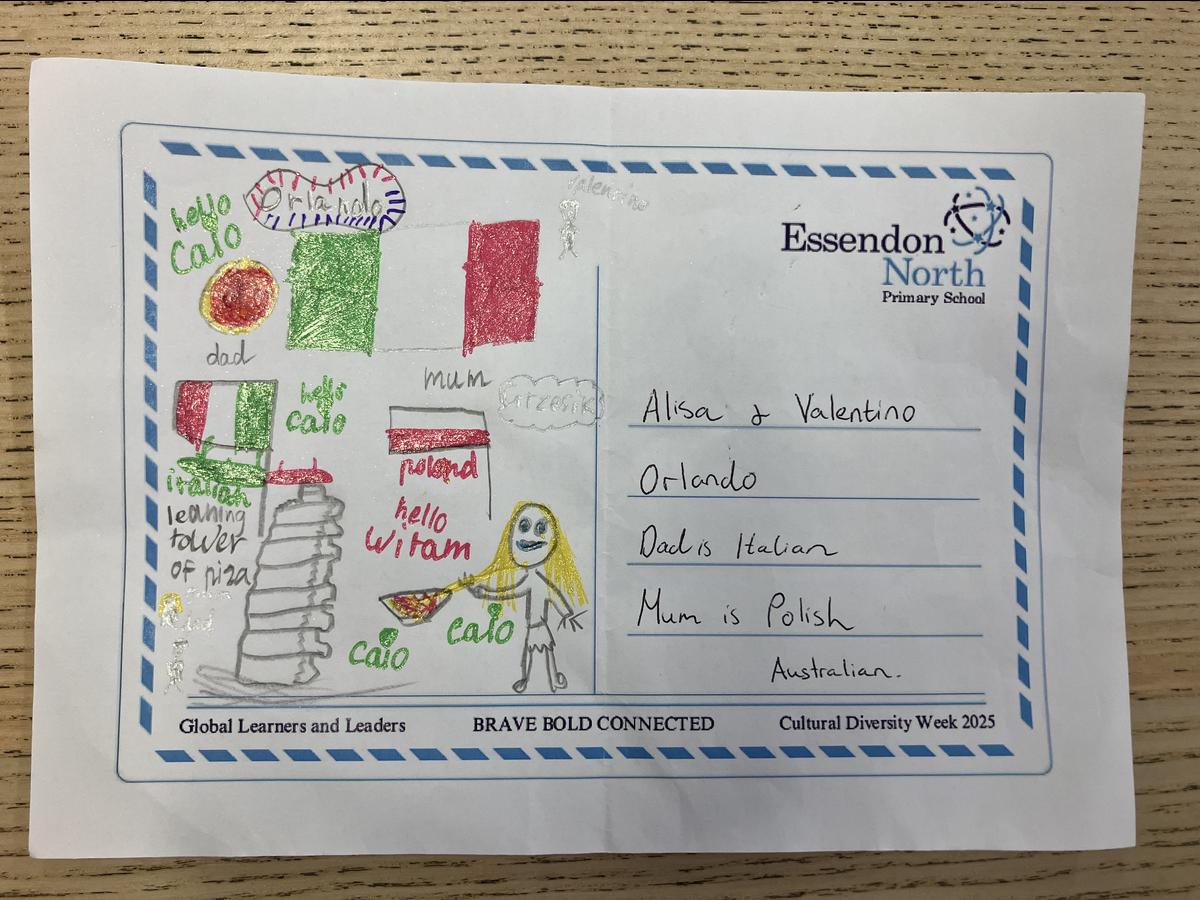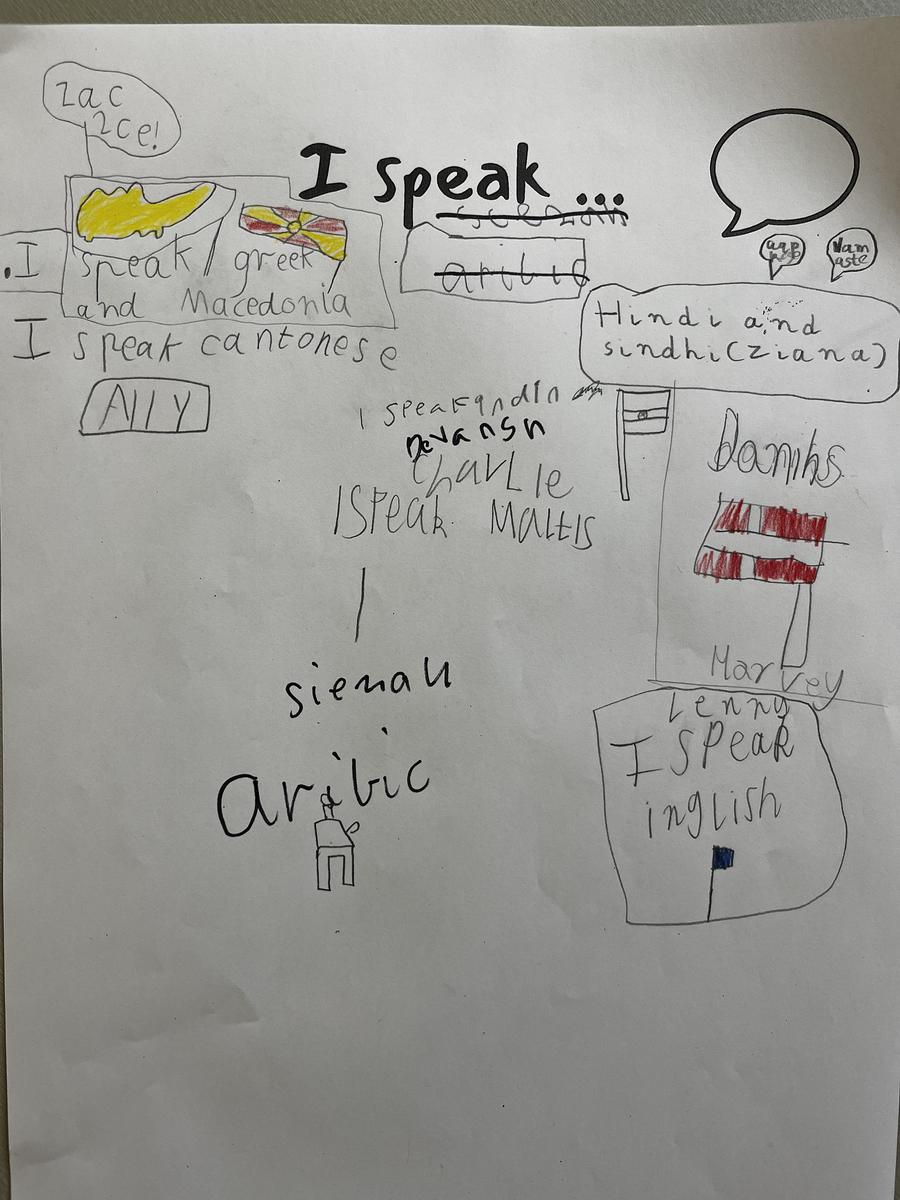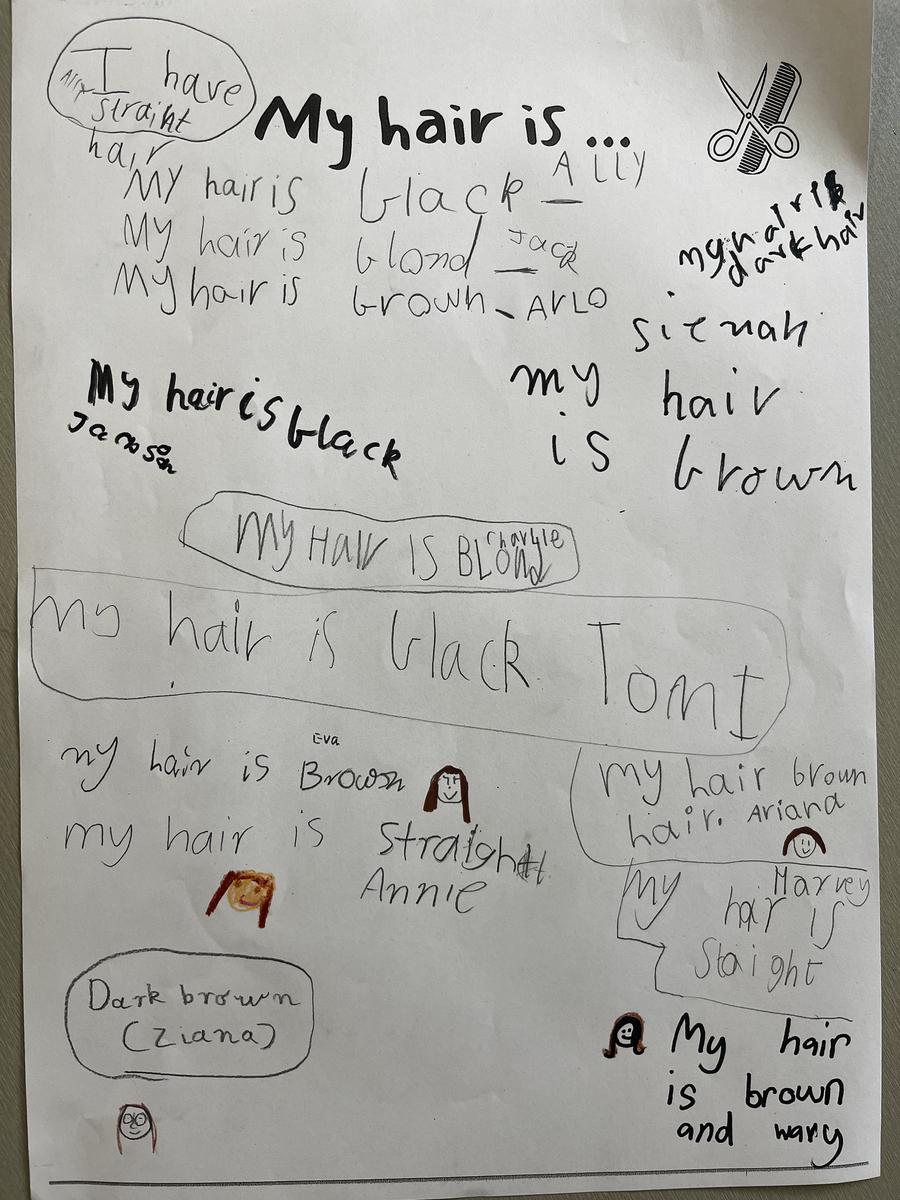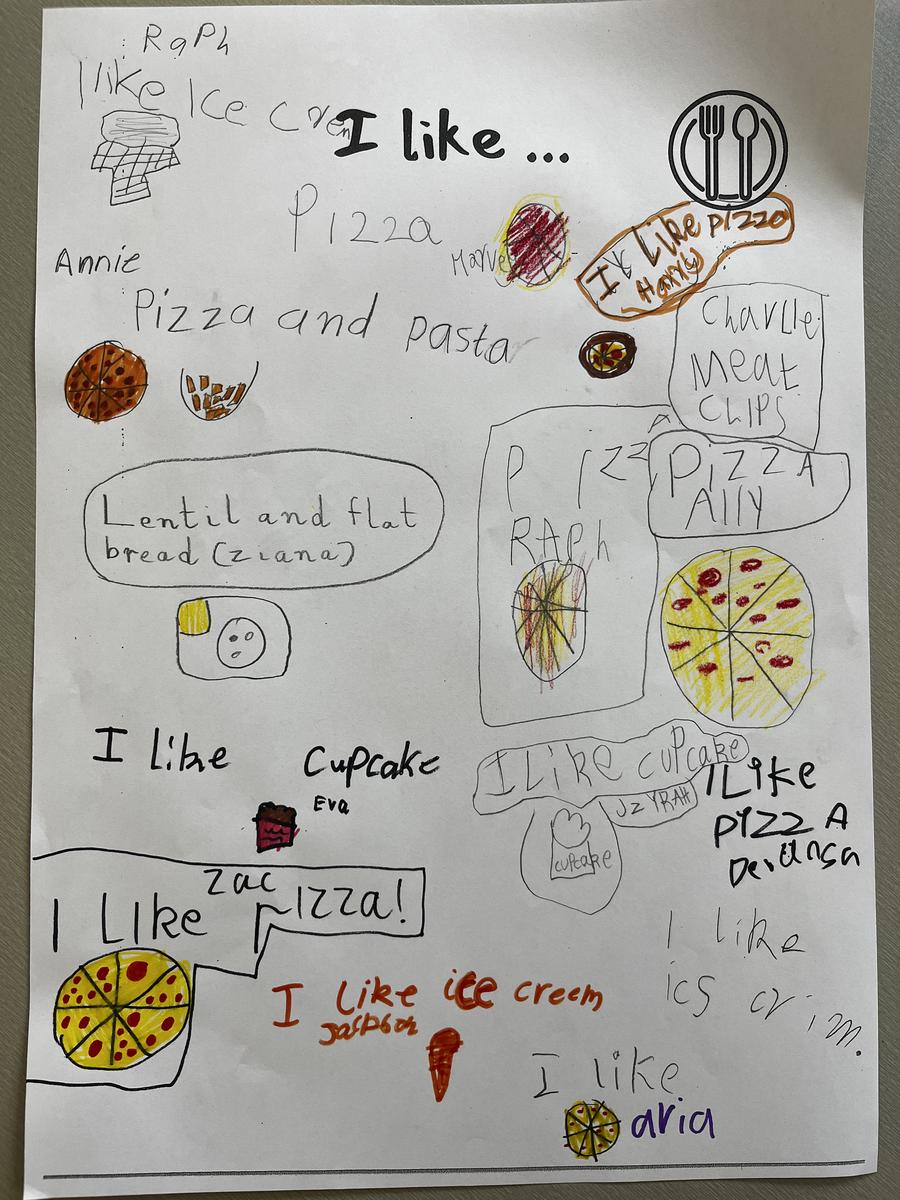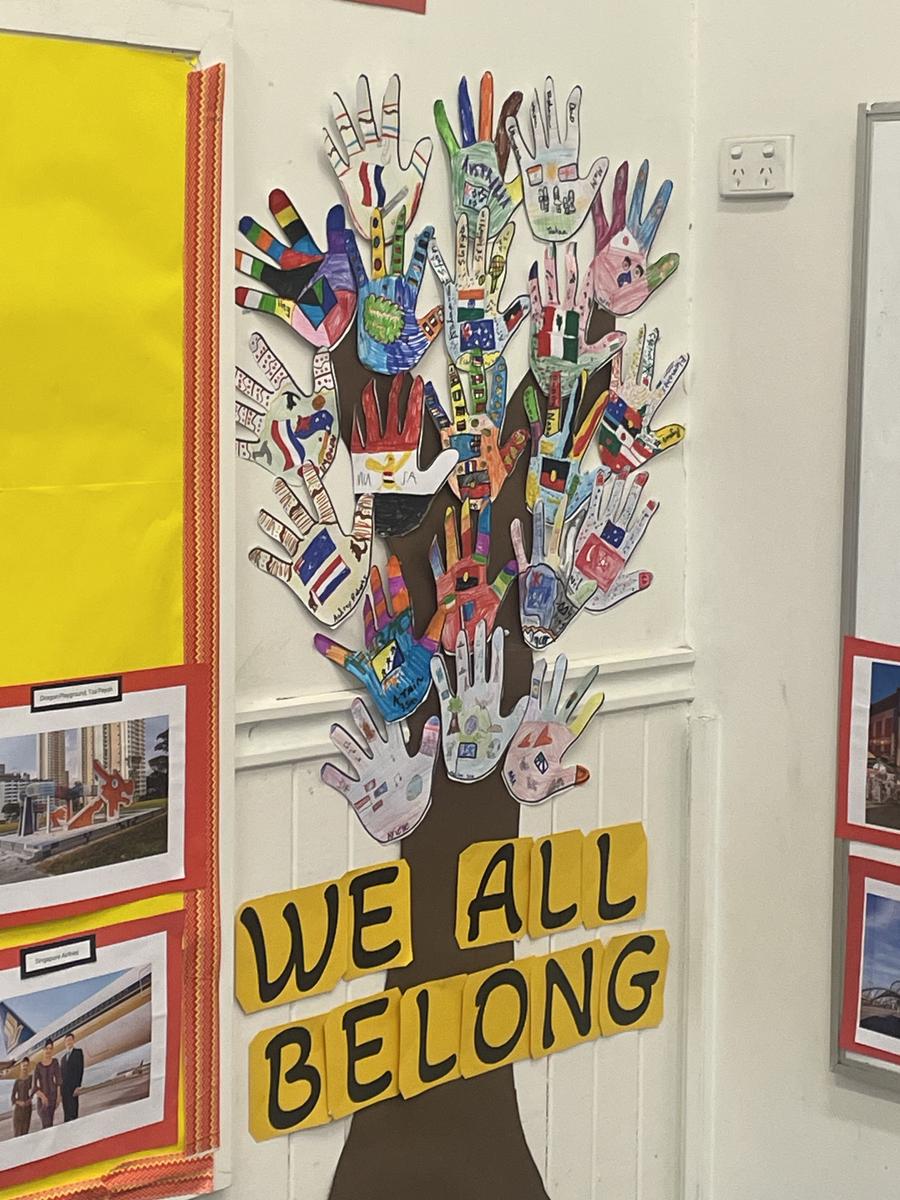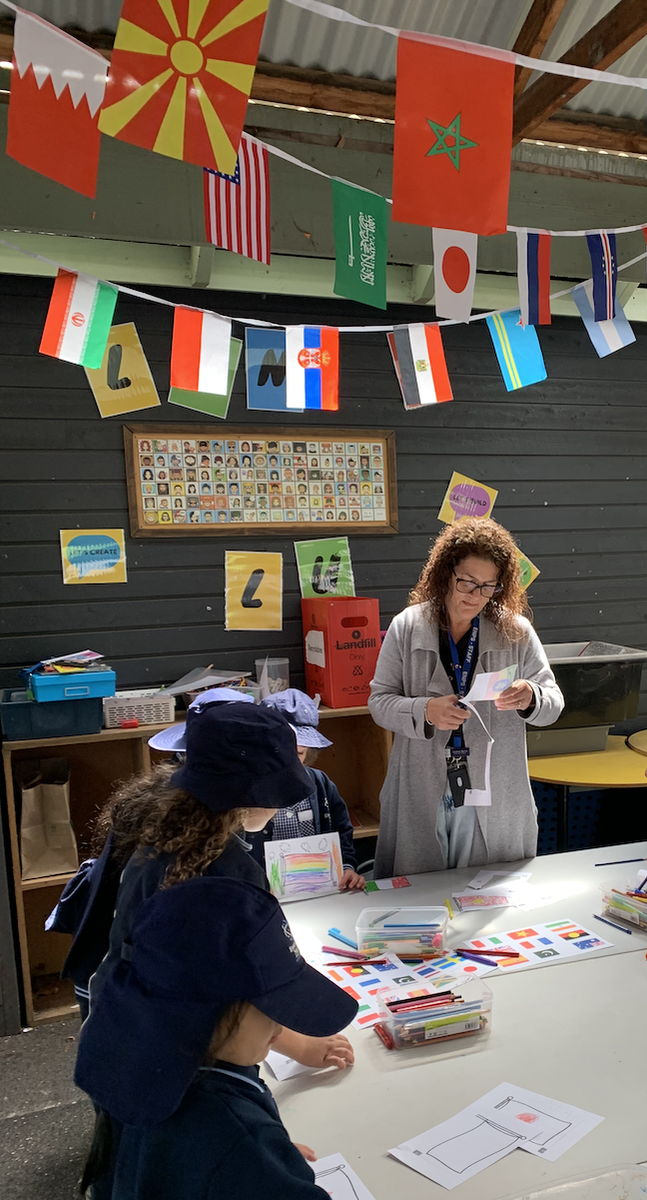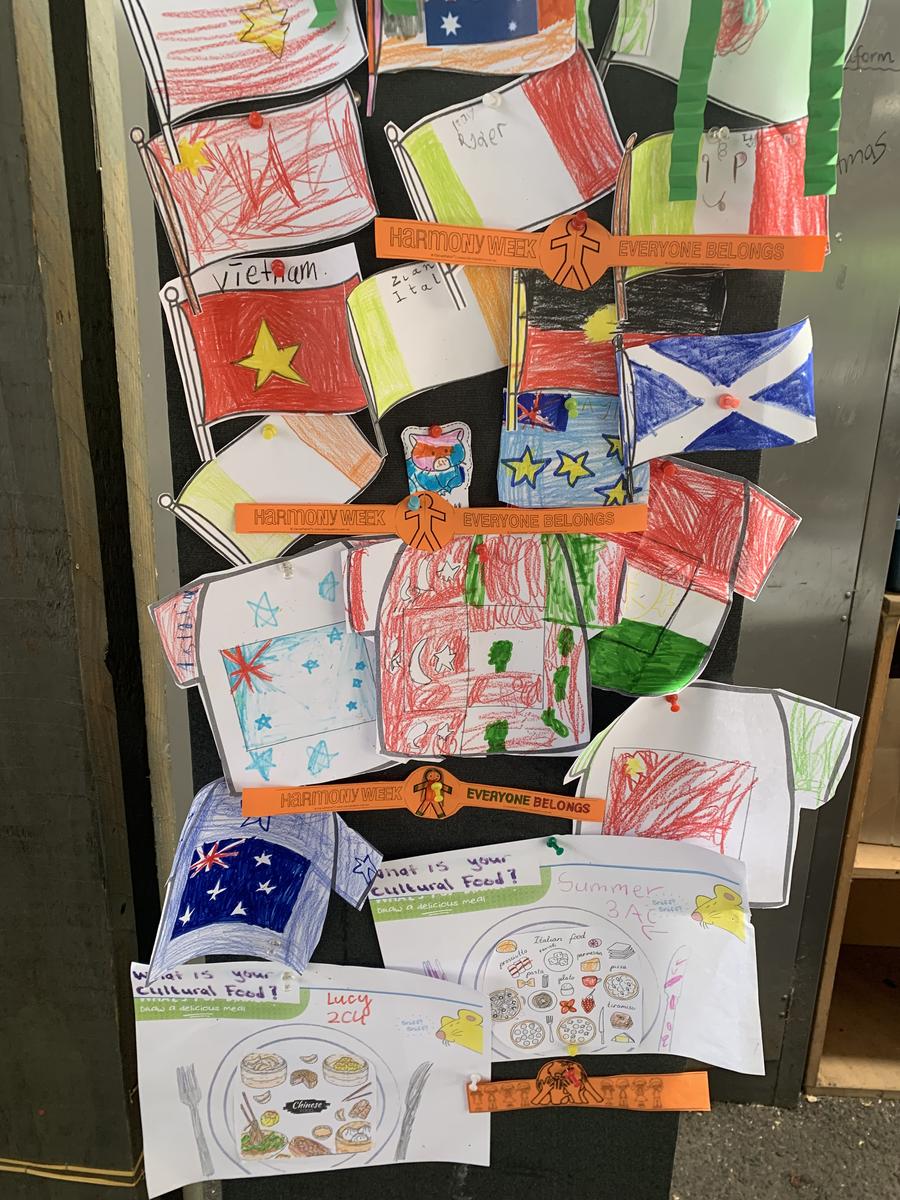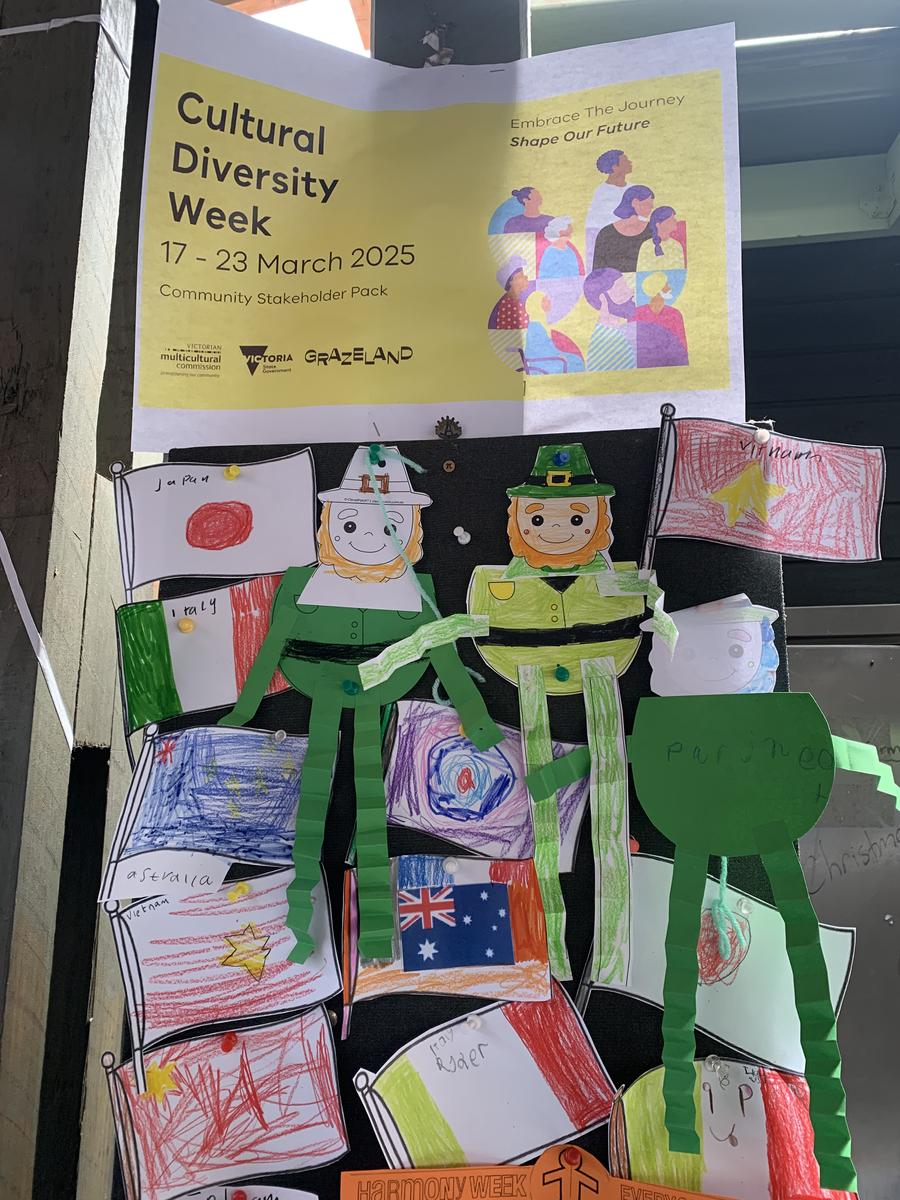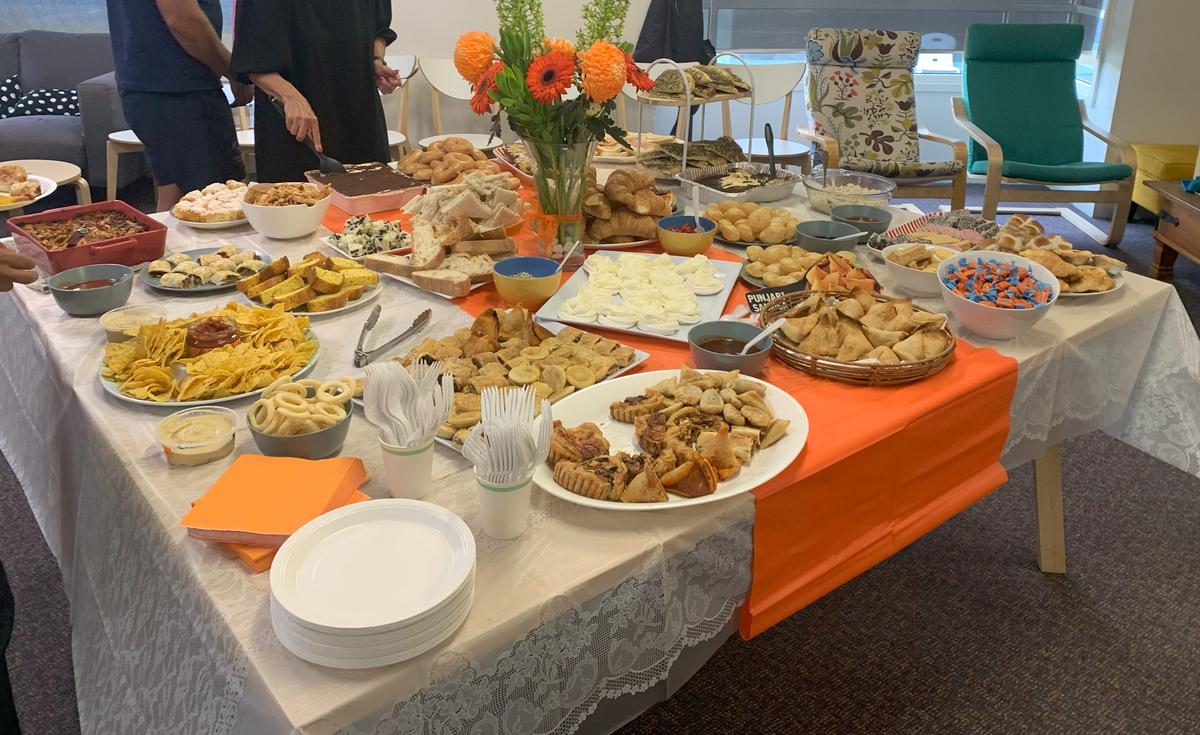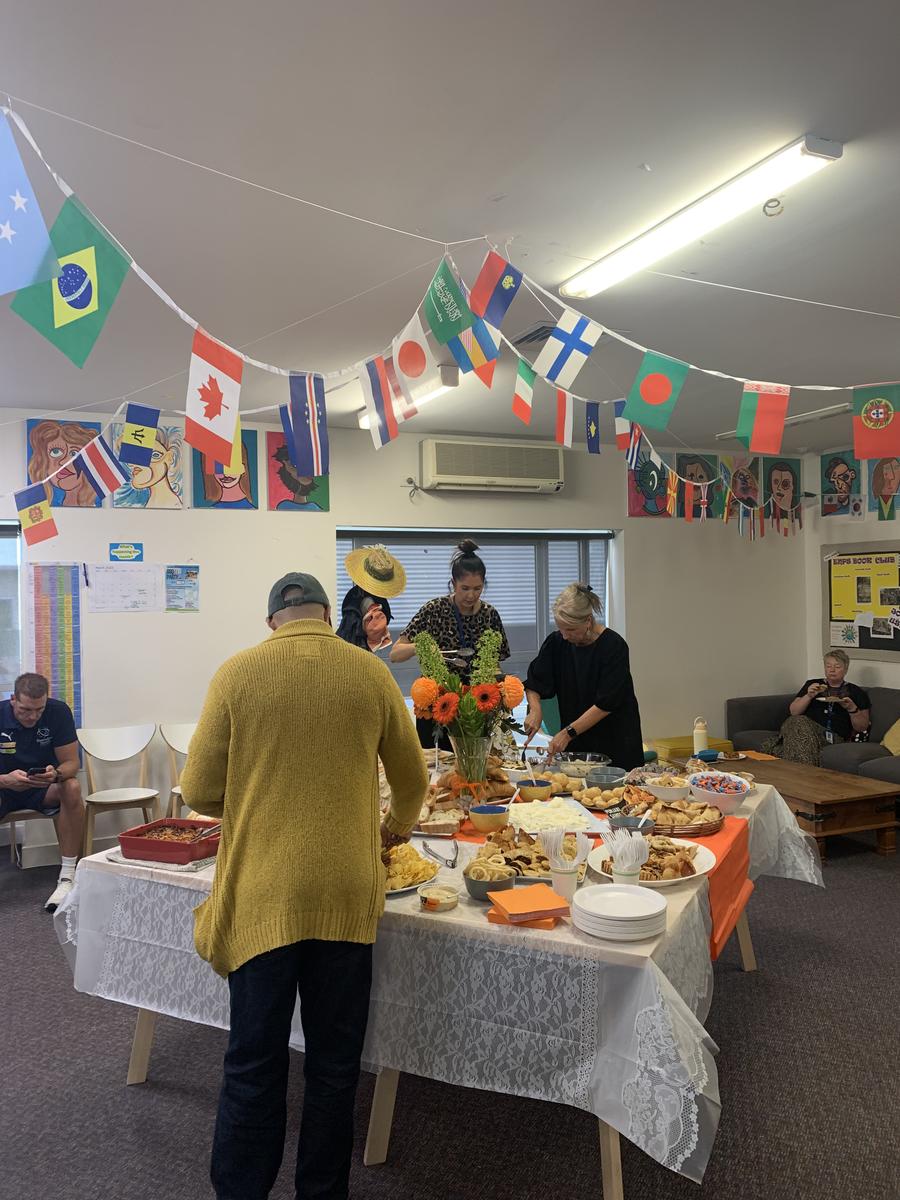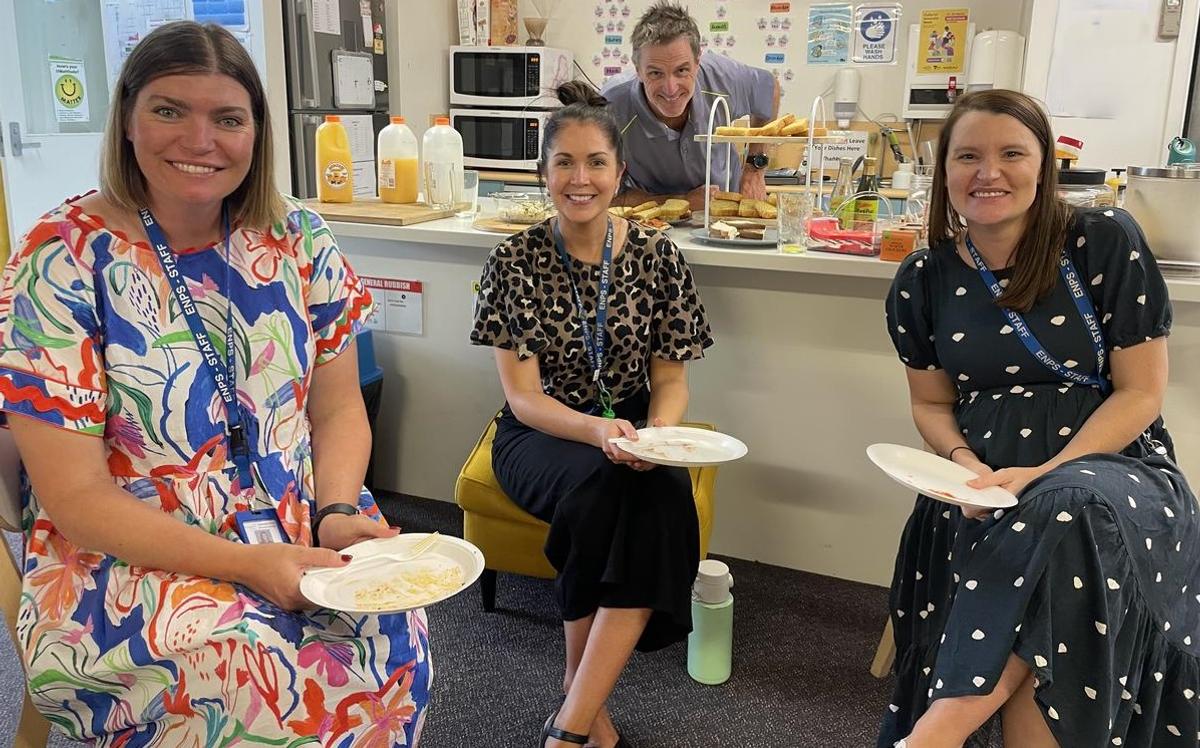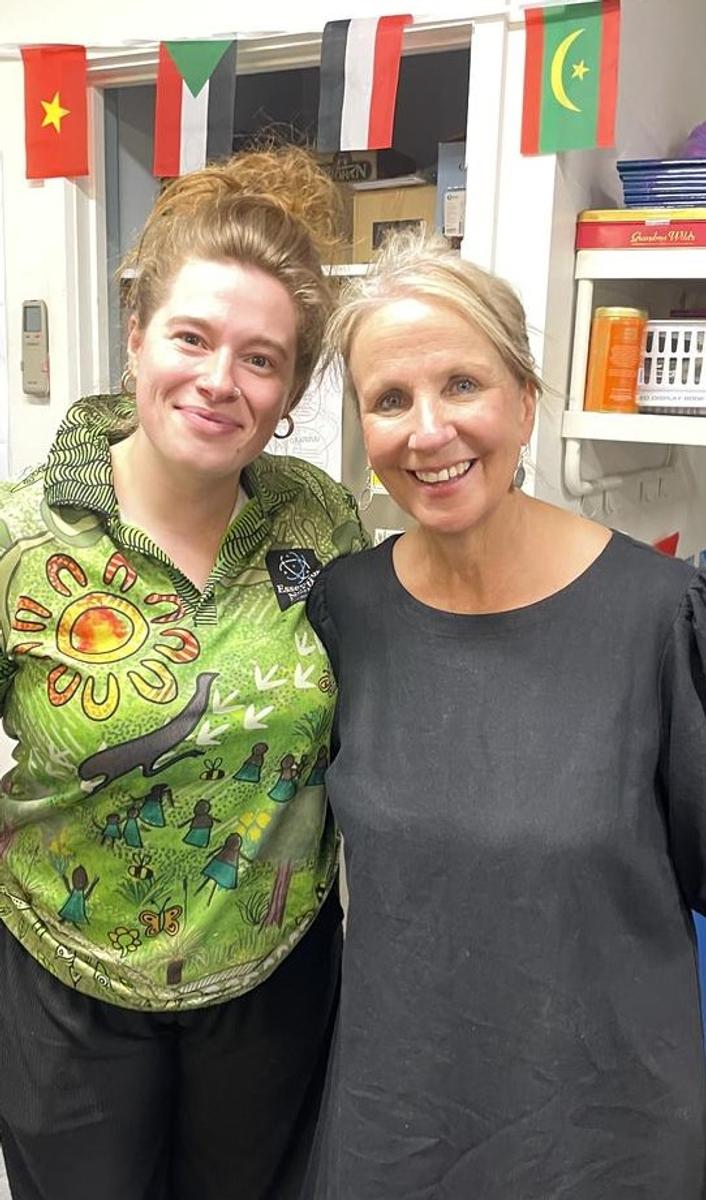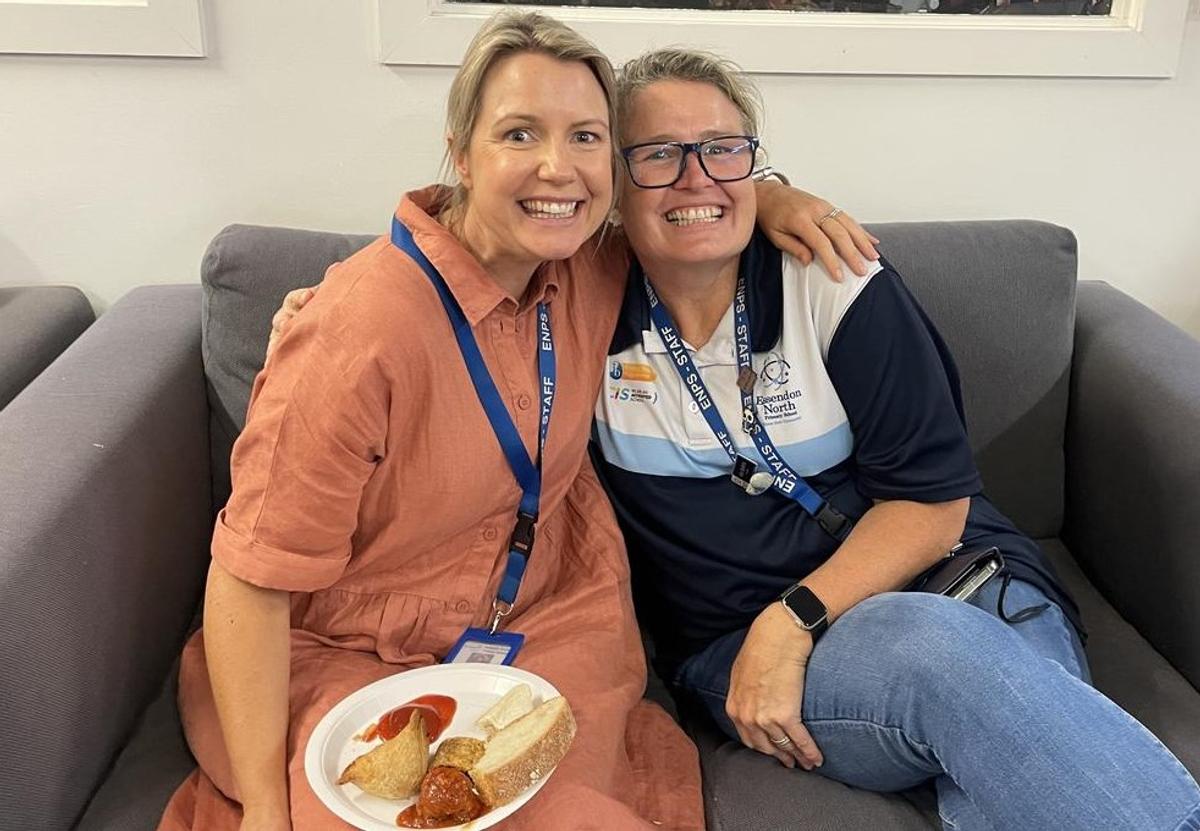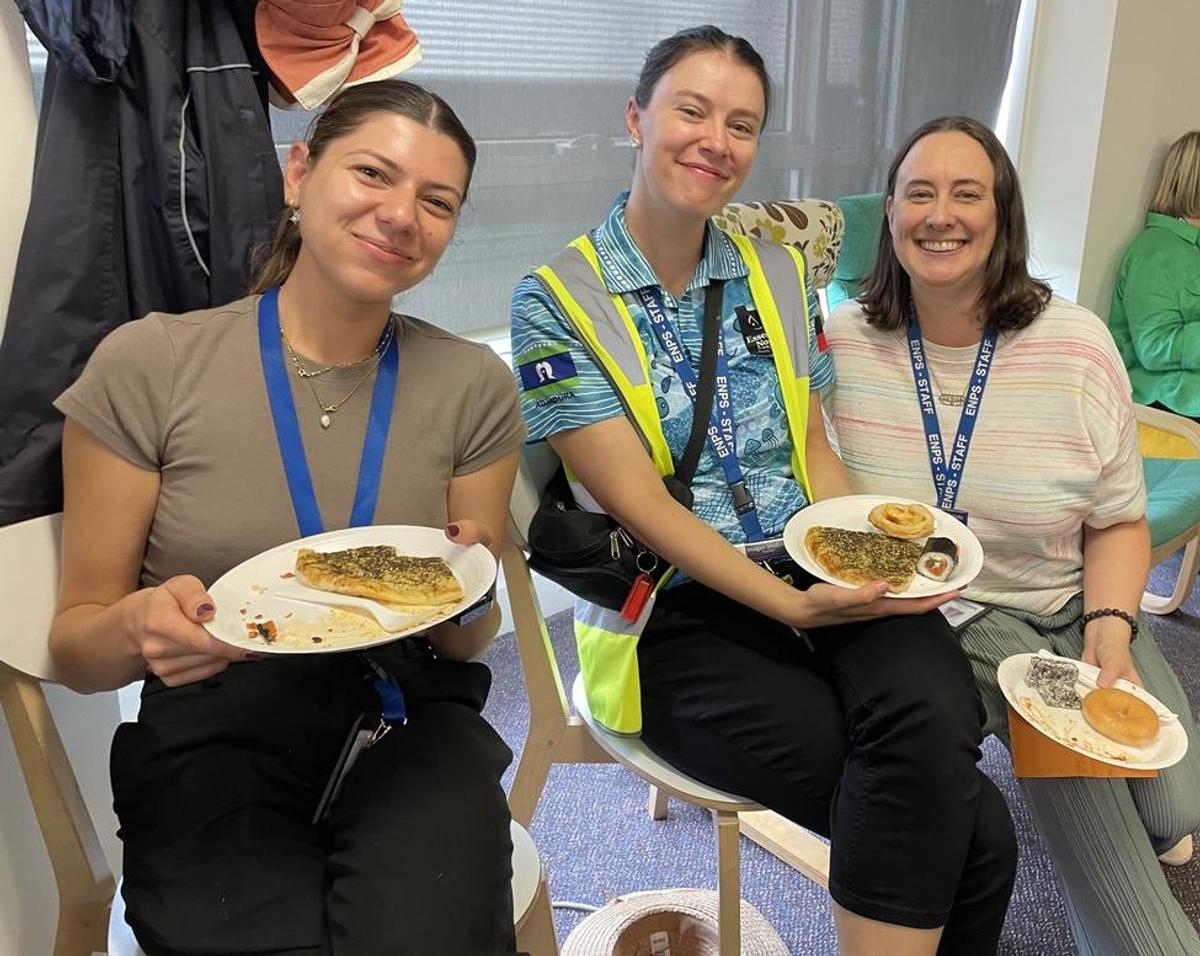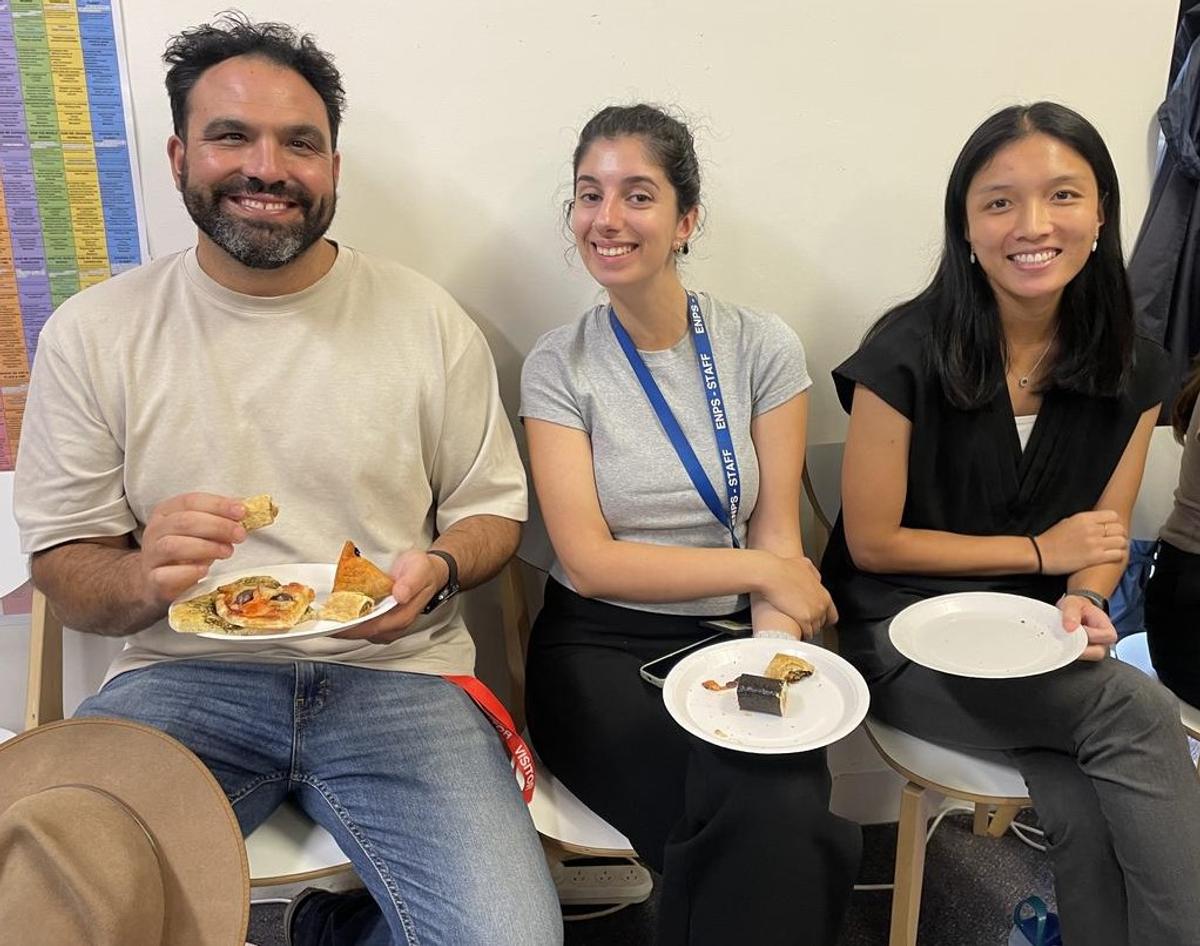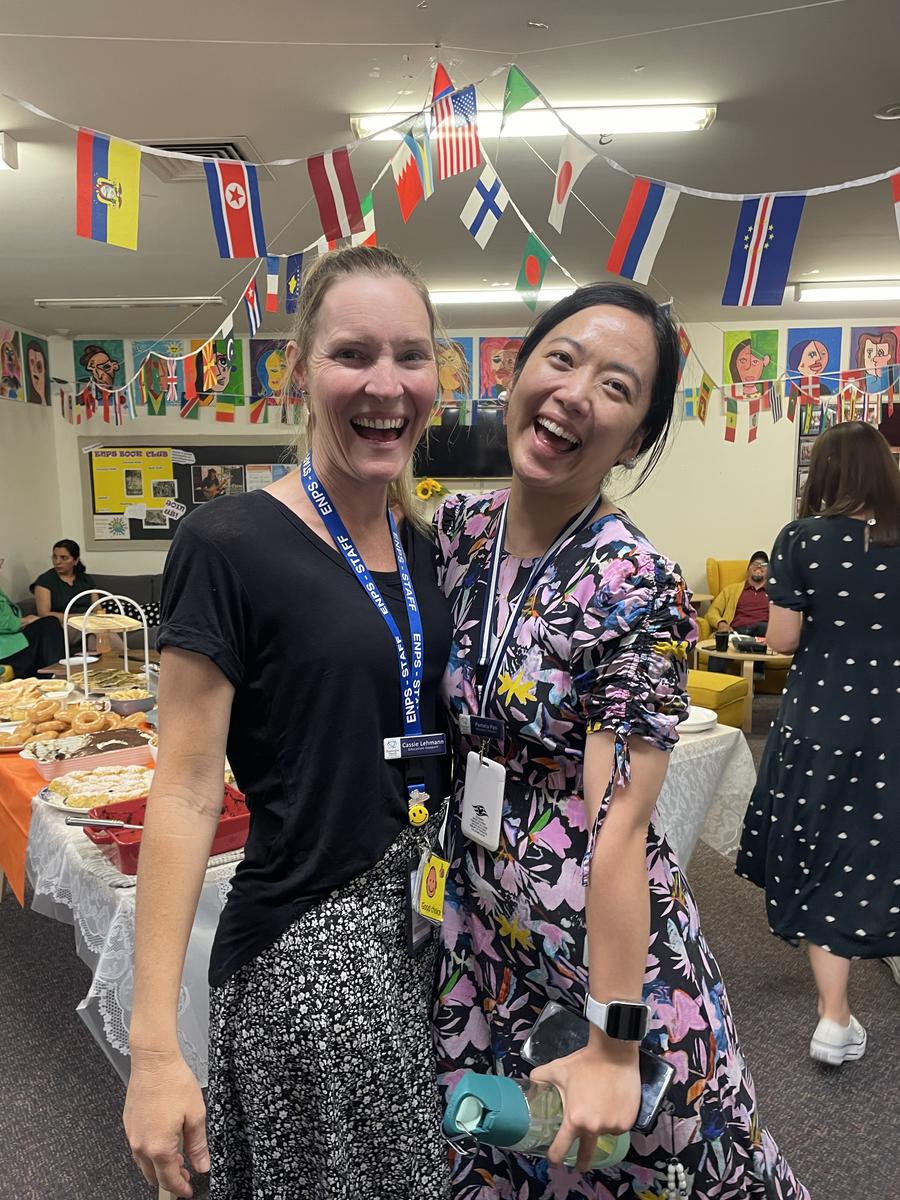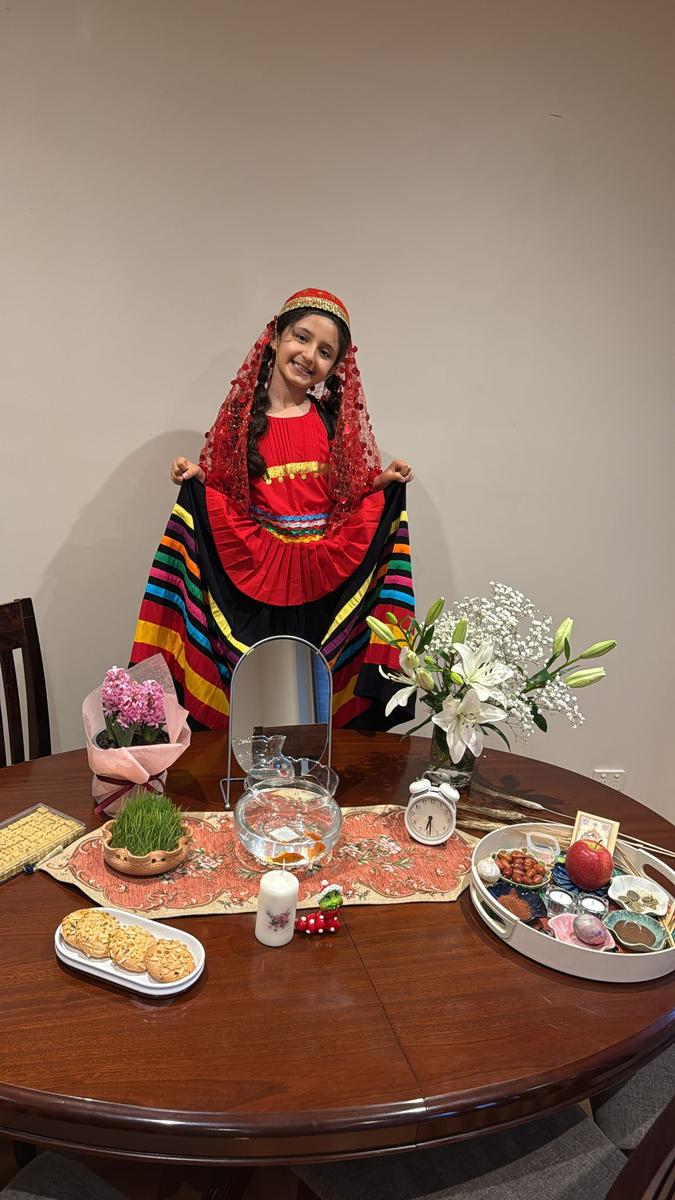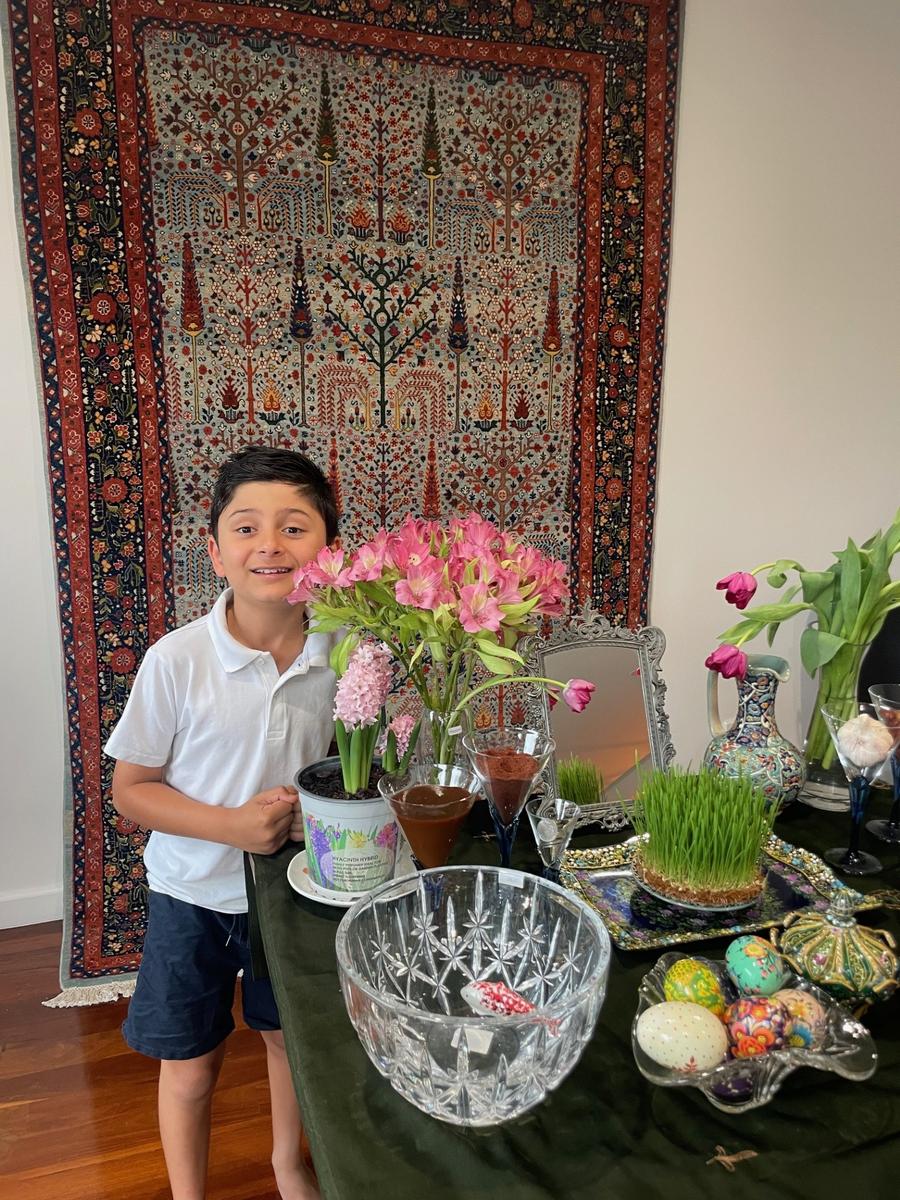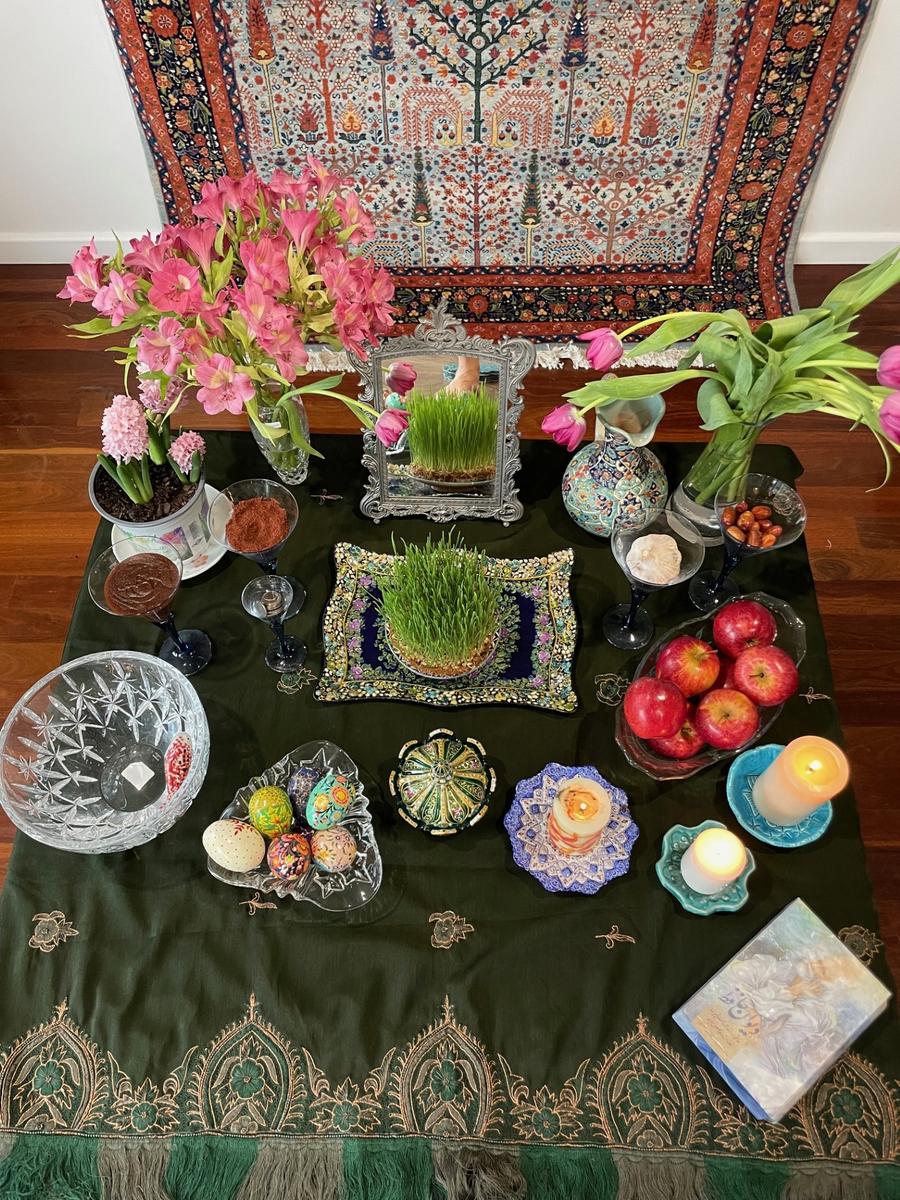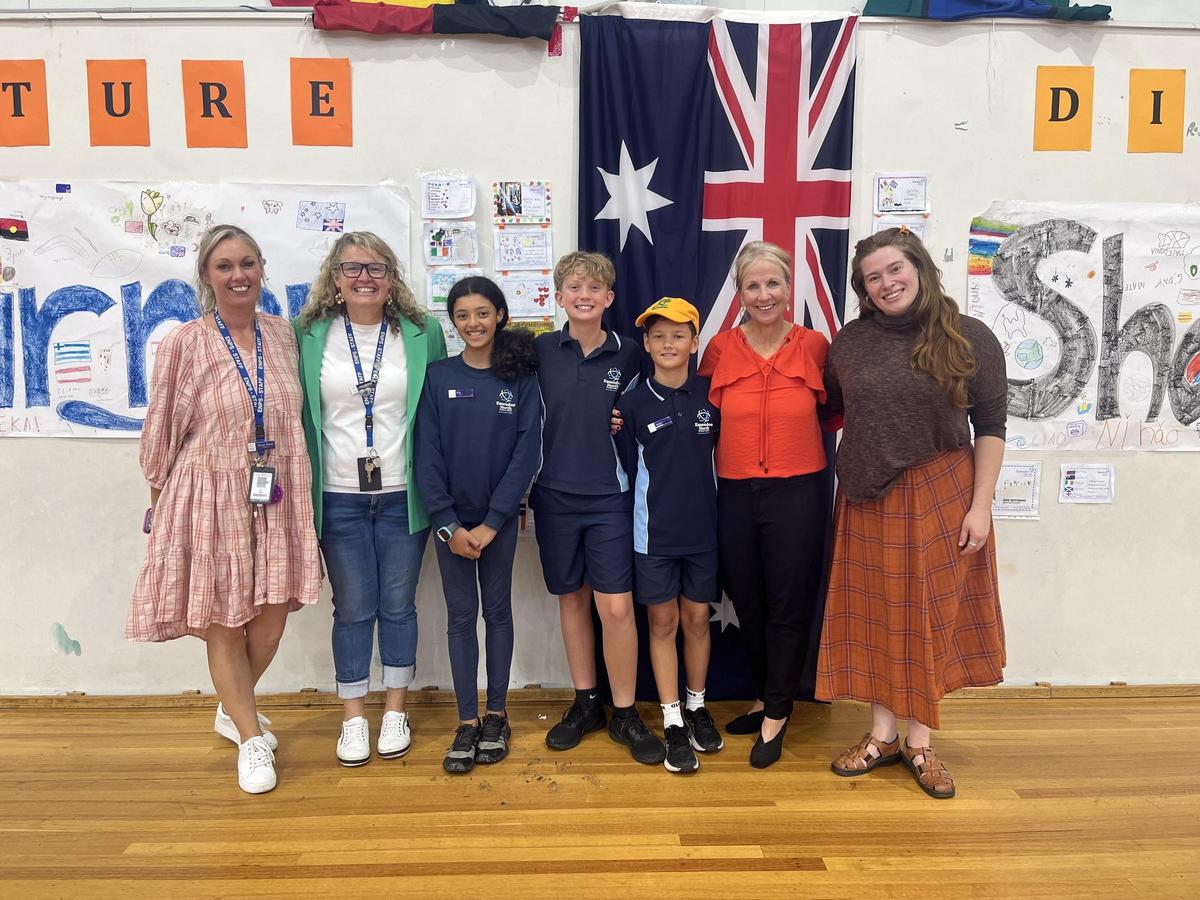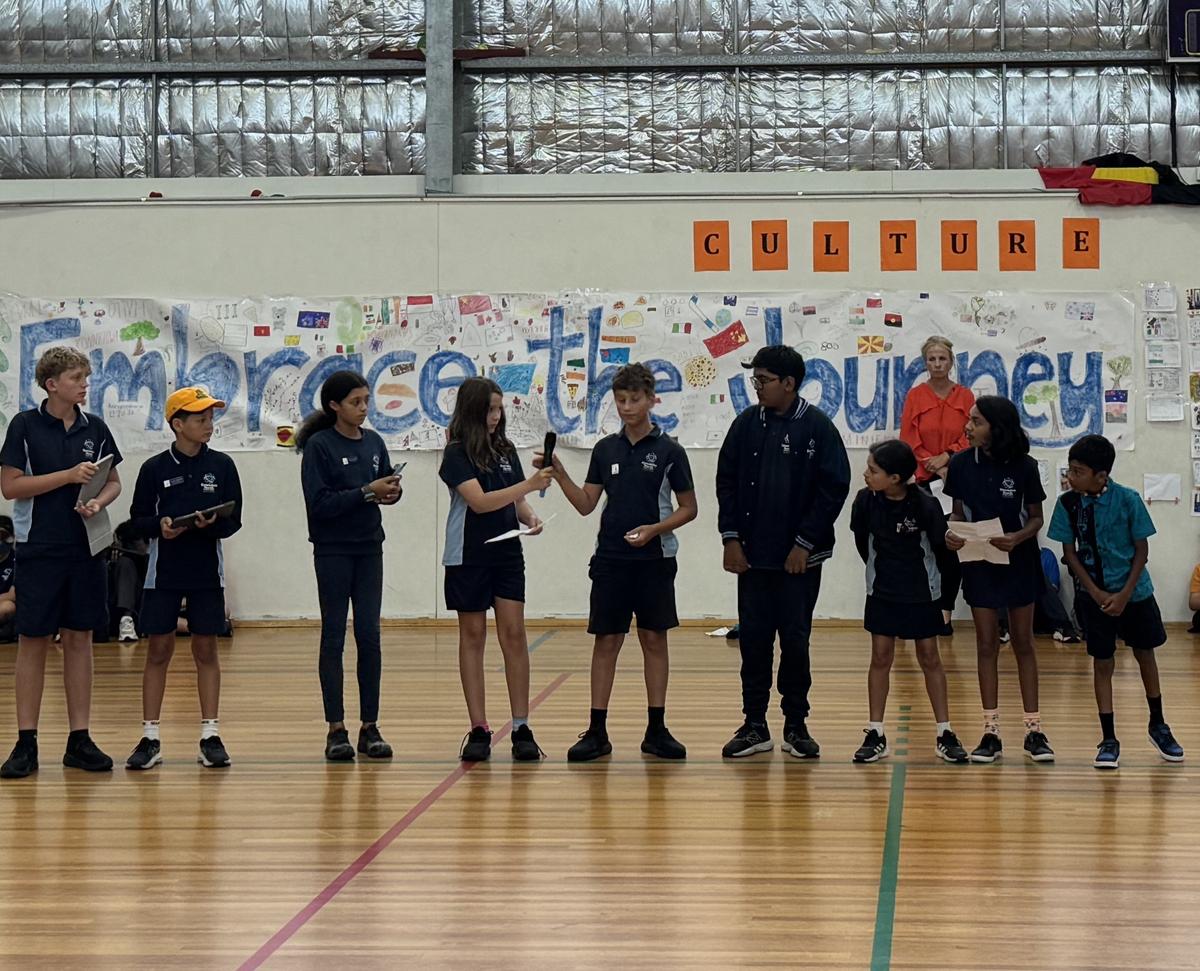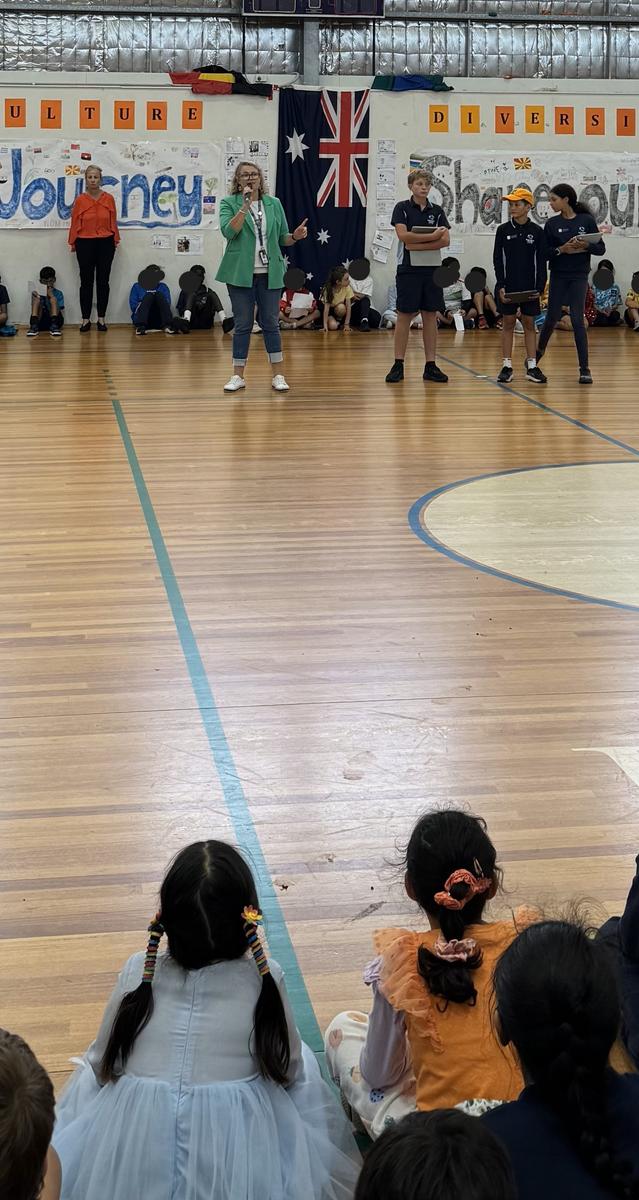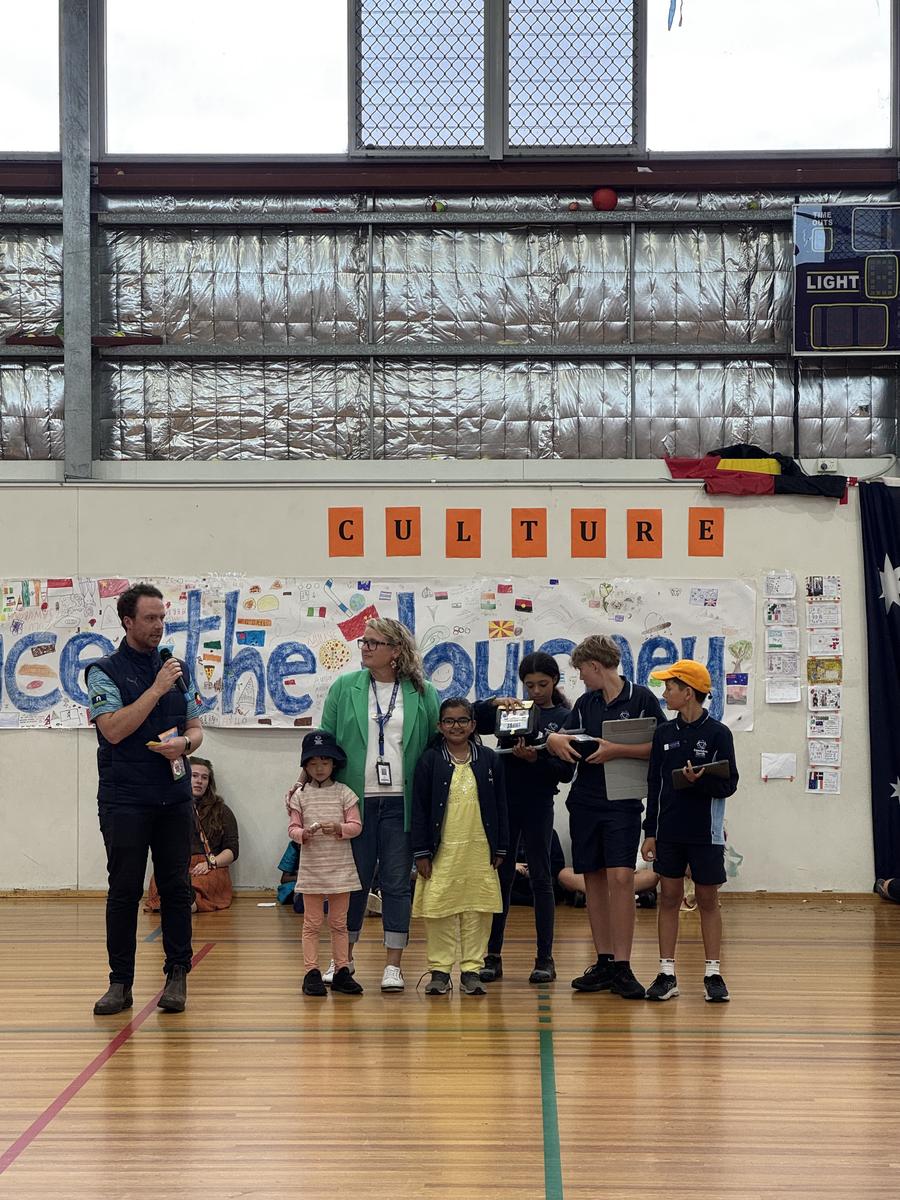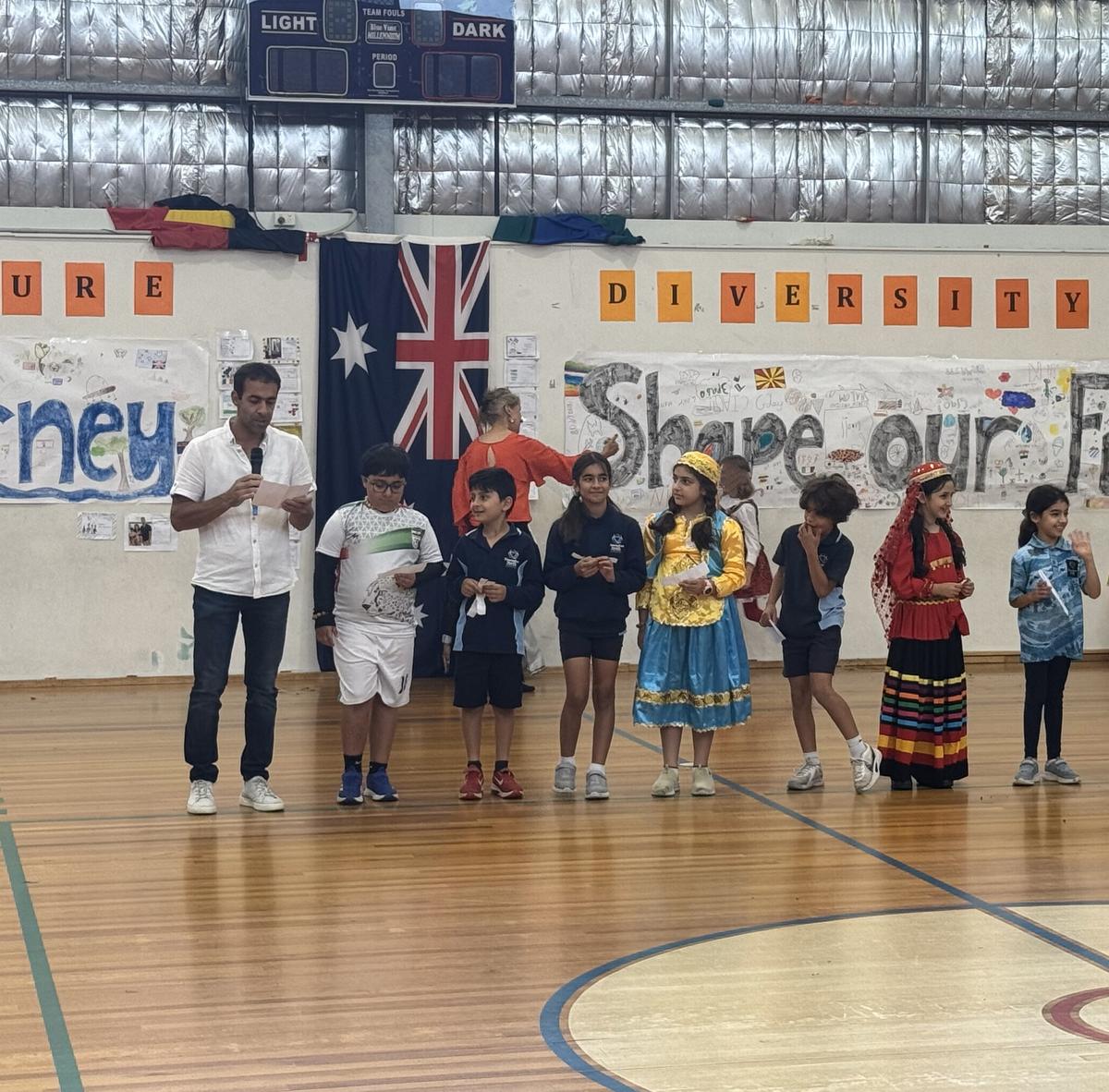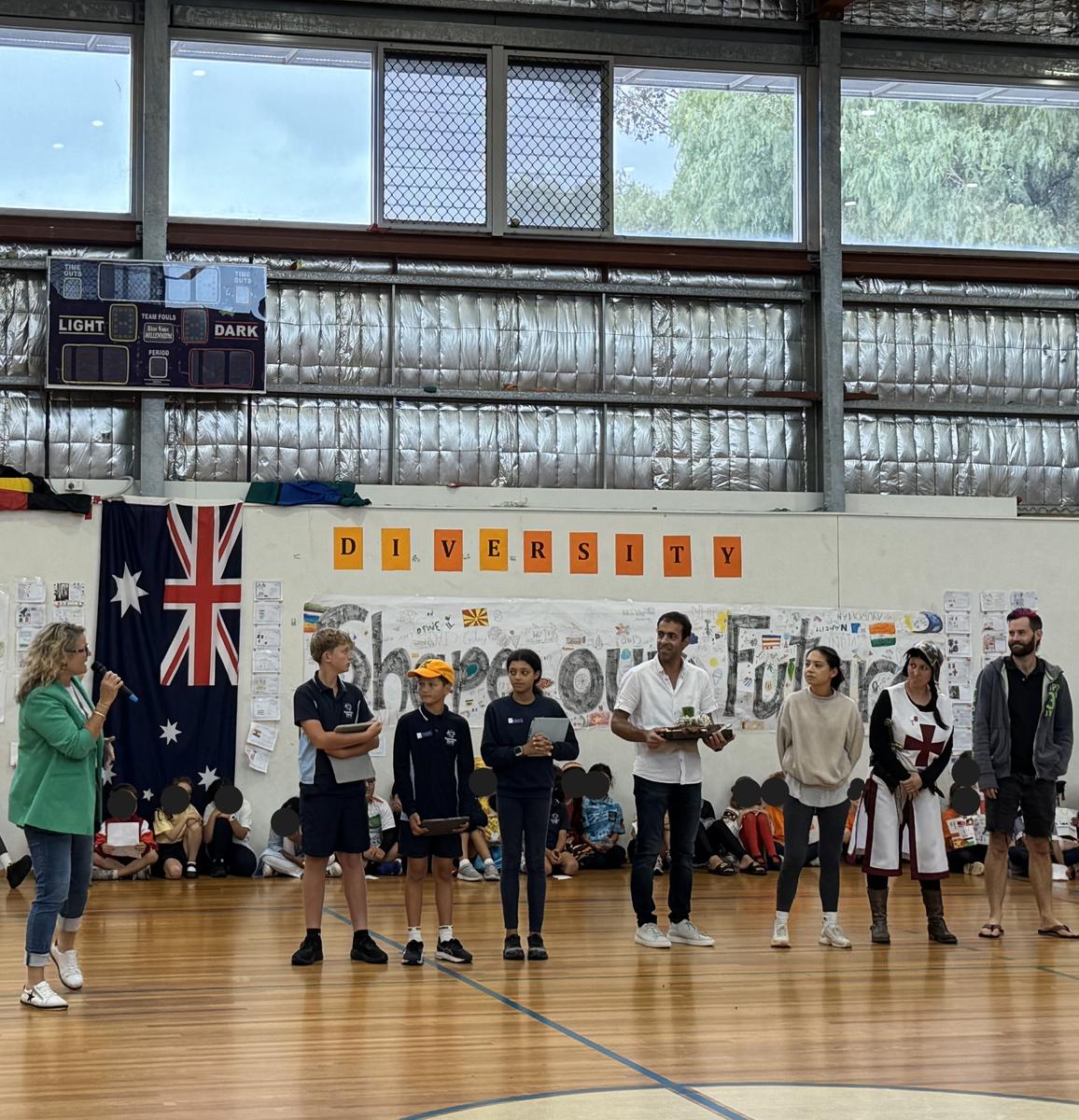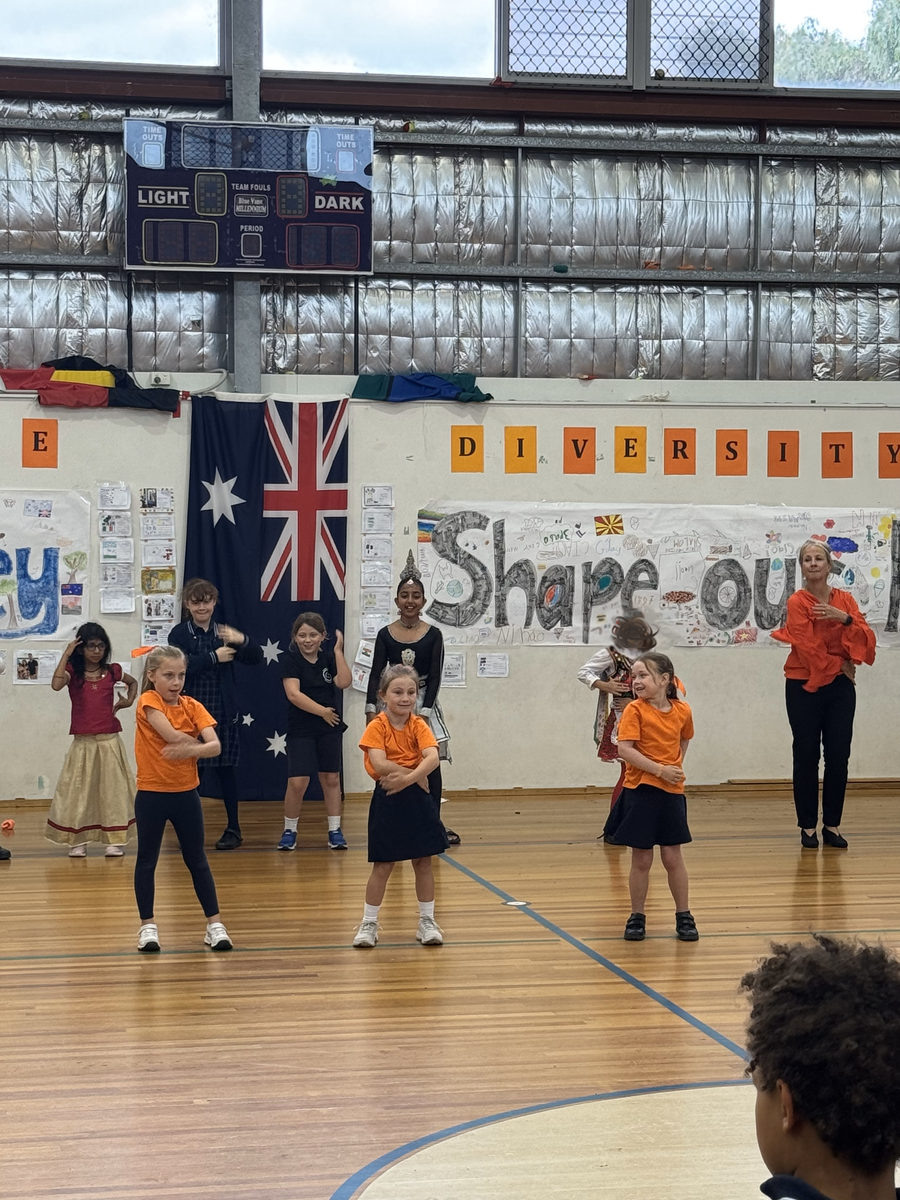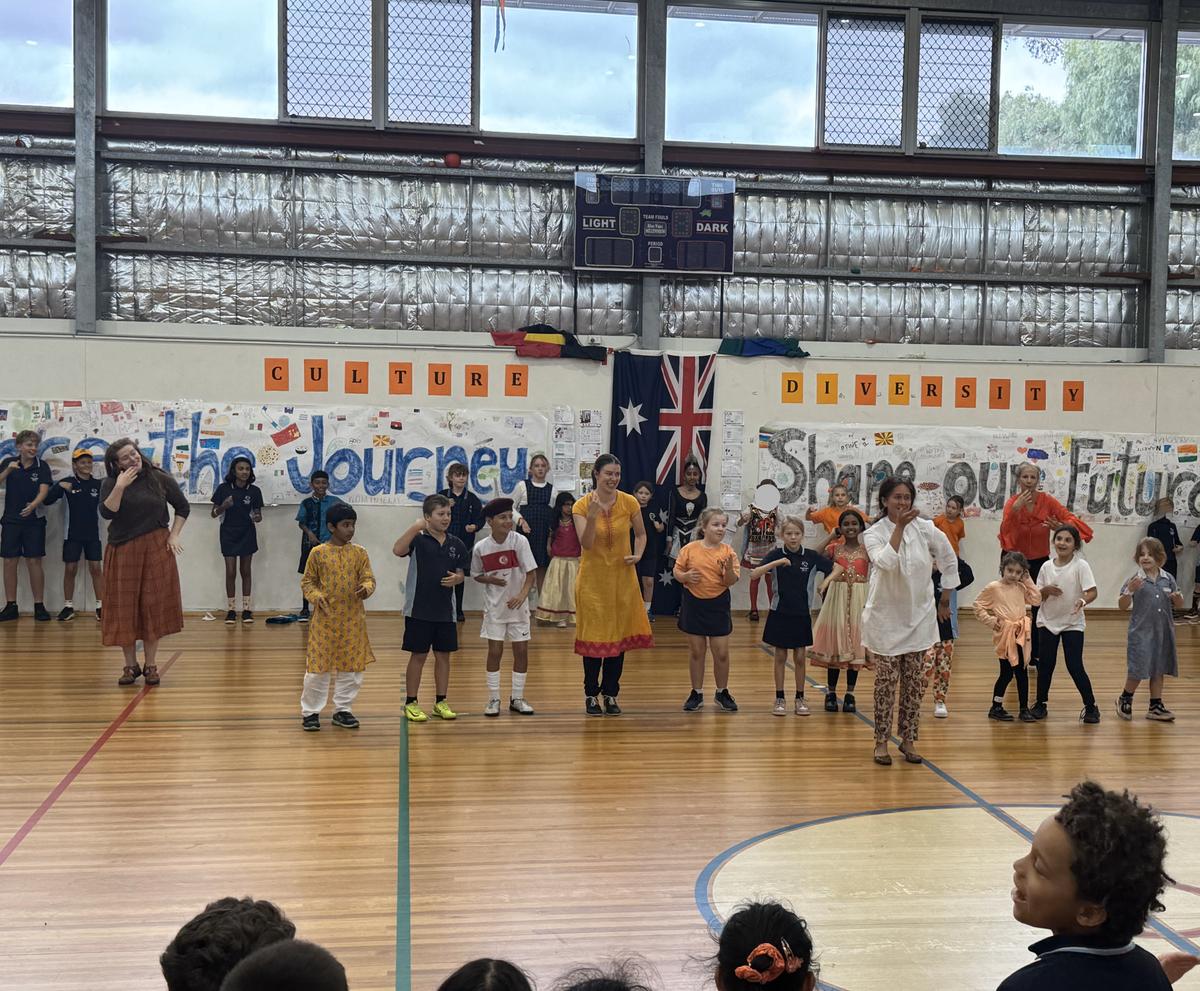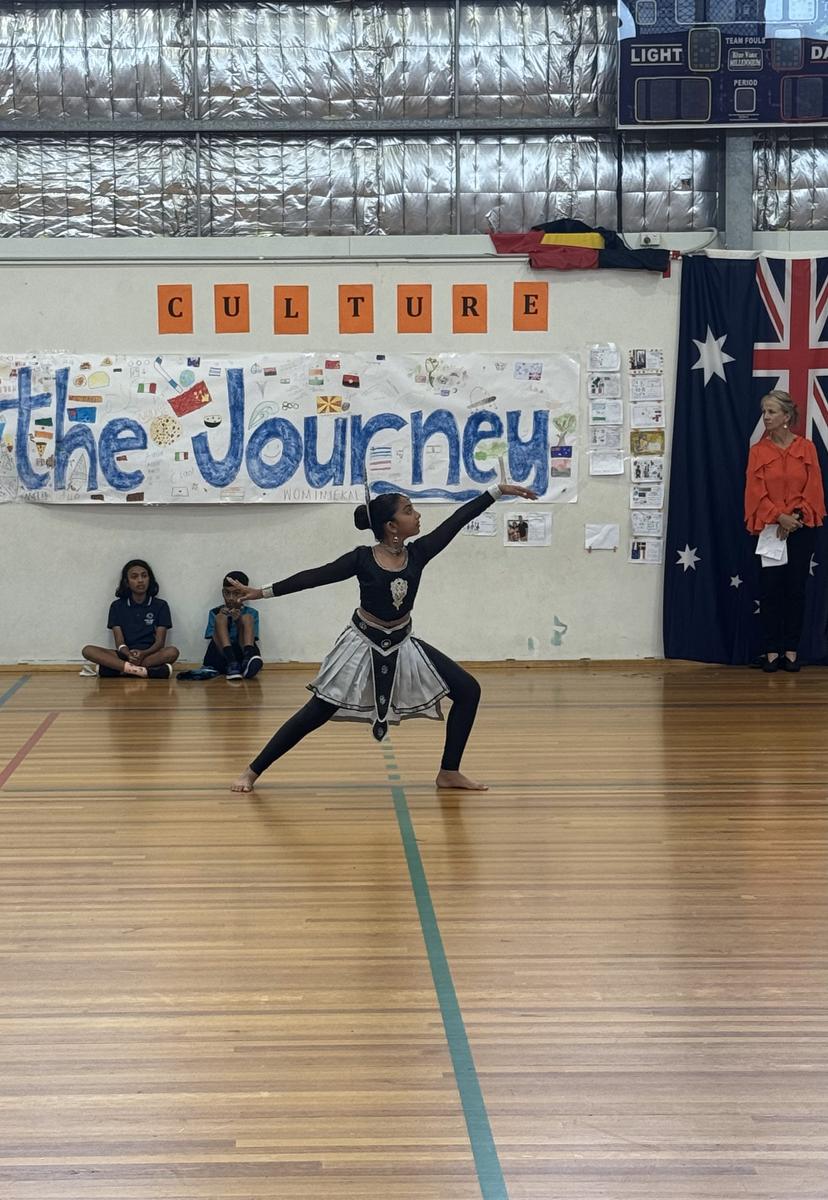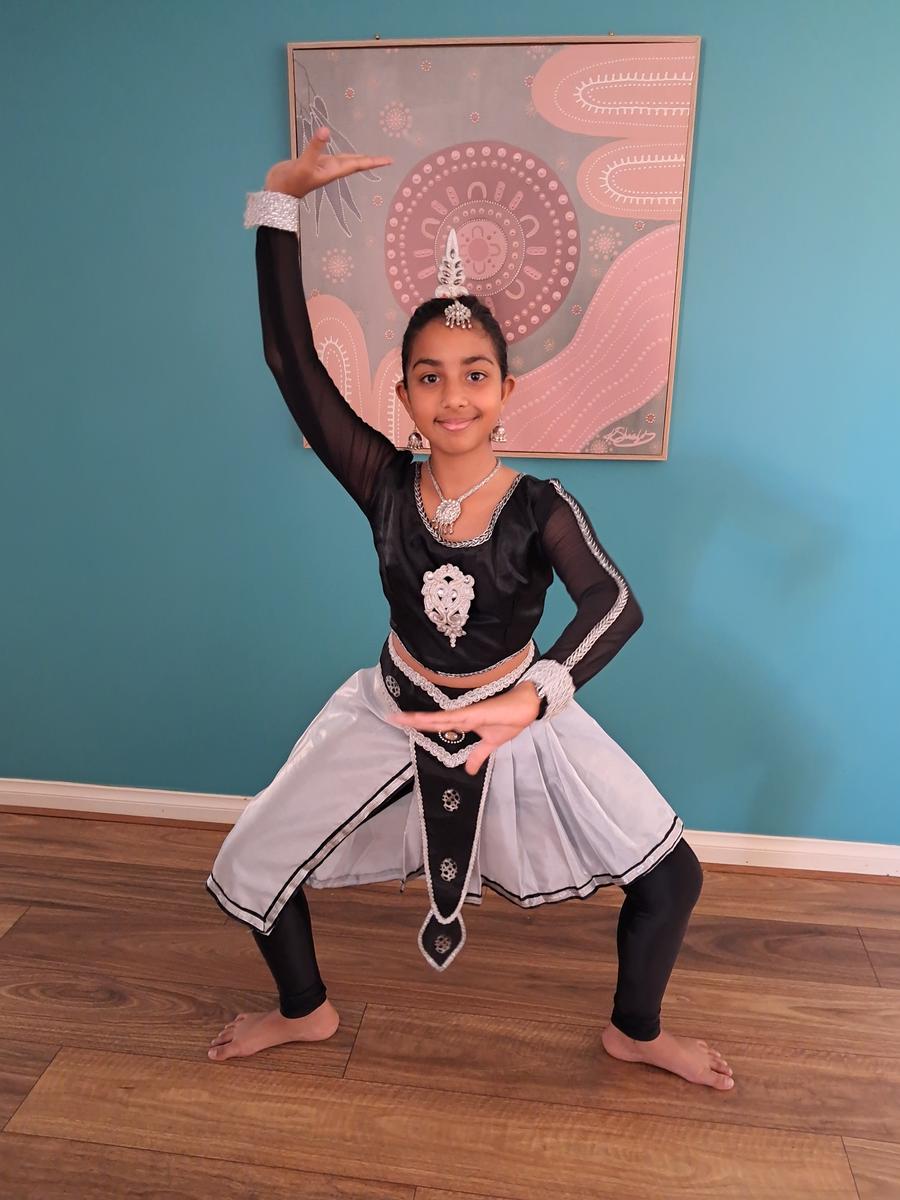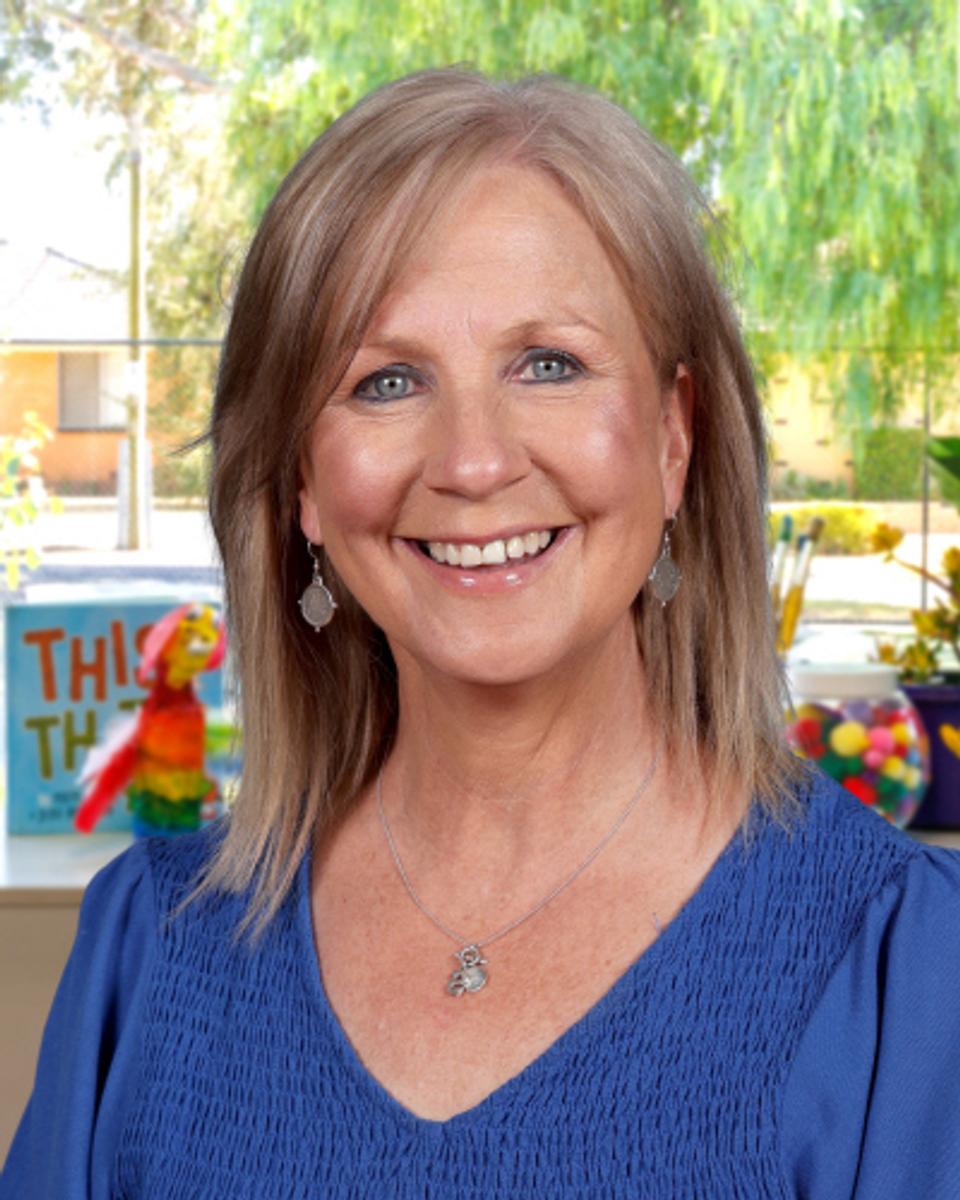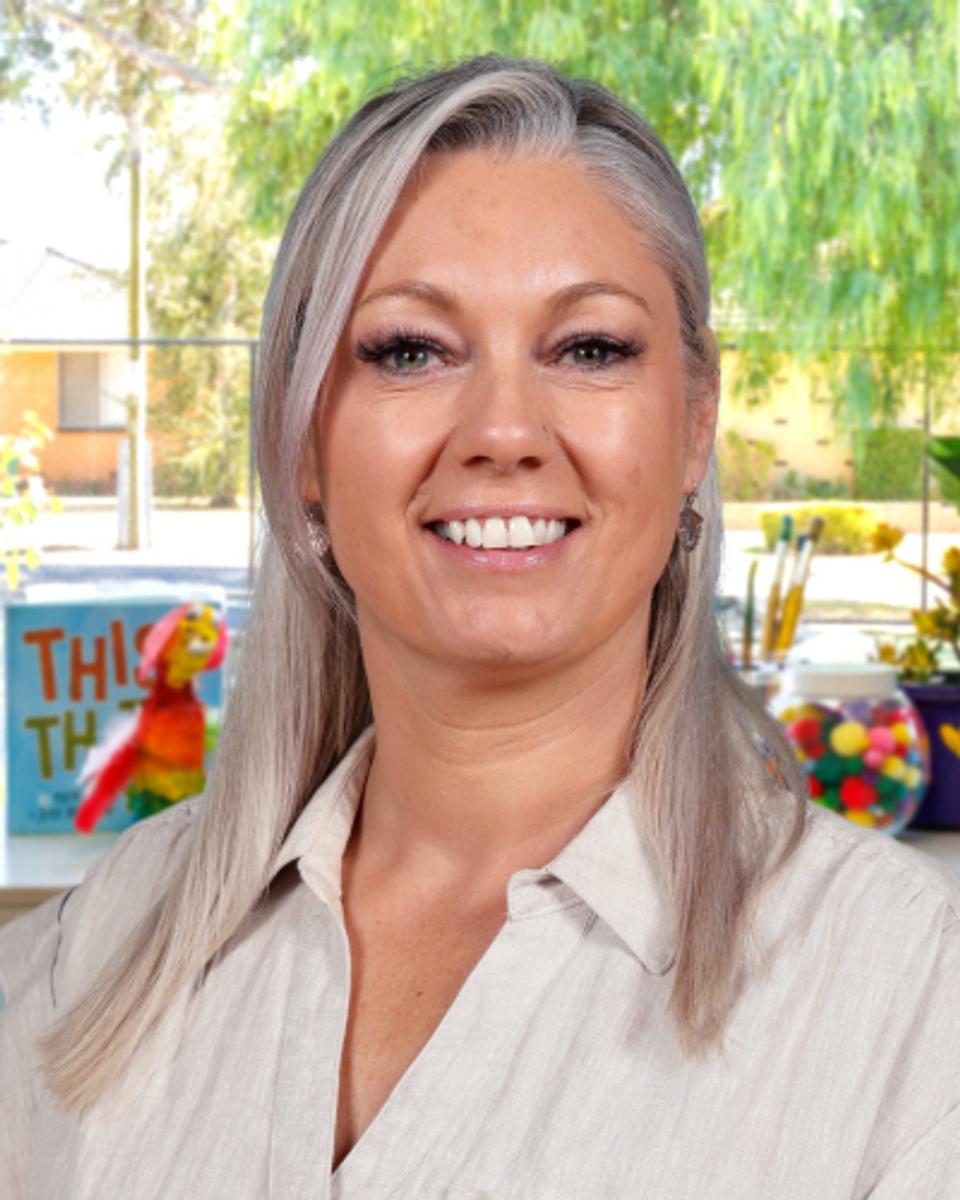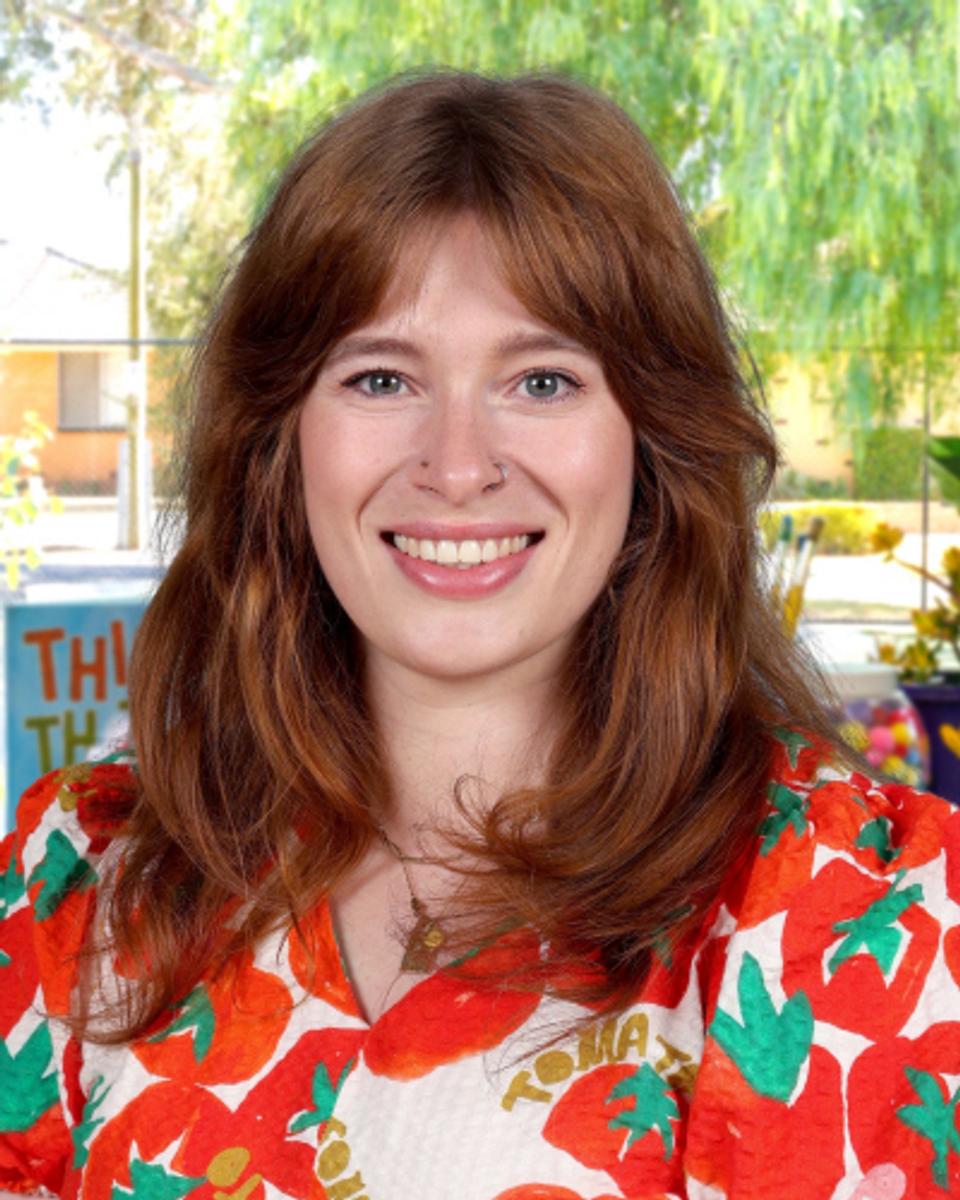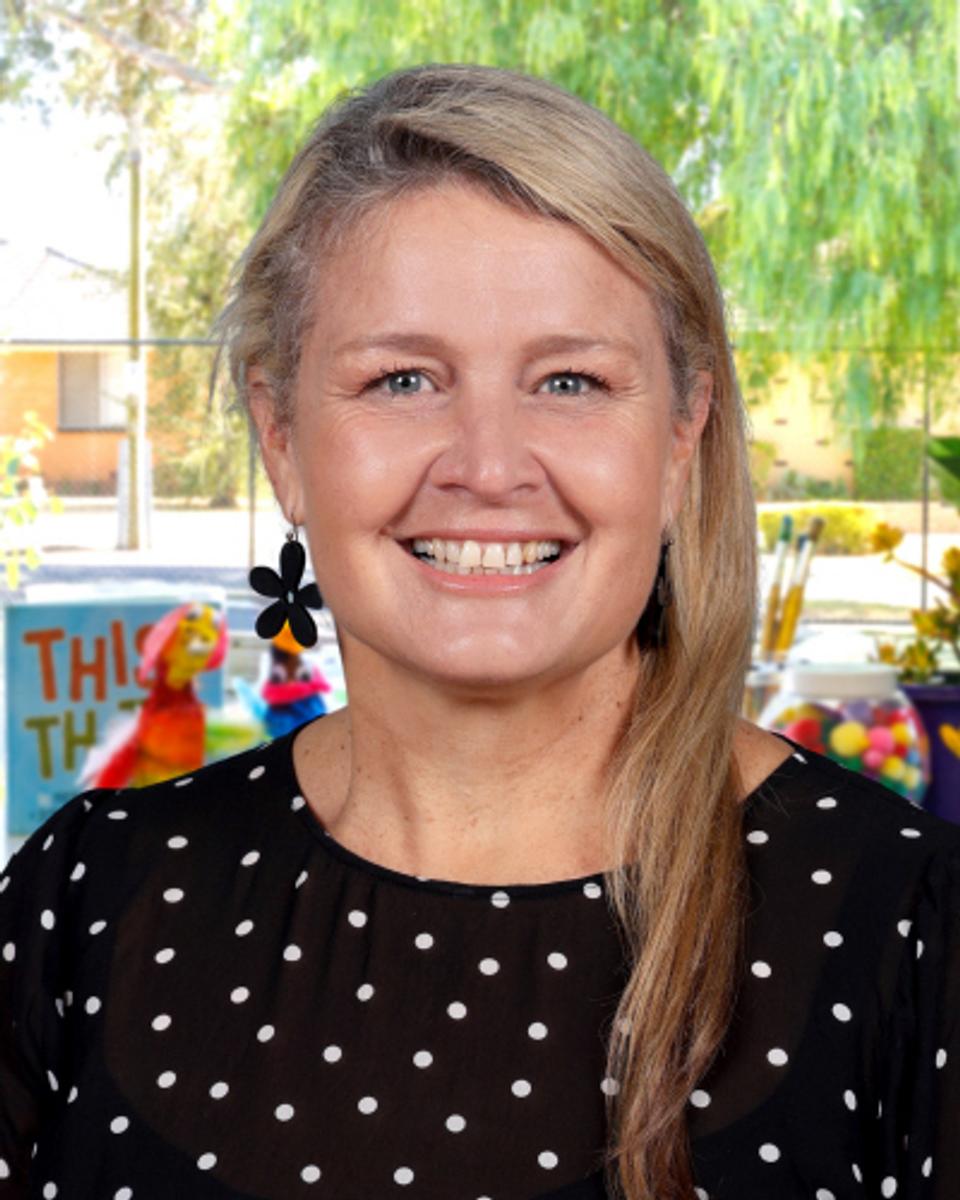Cultural Diversity Week
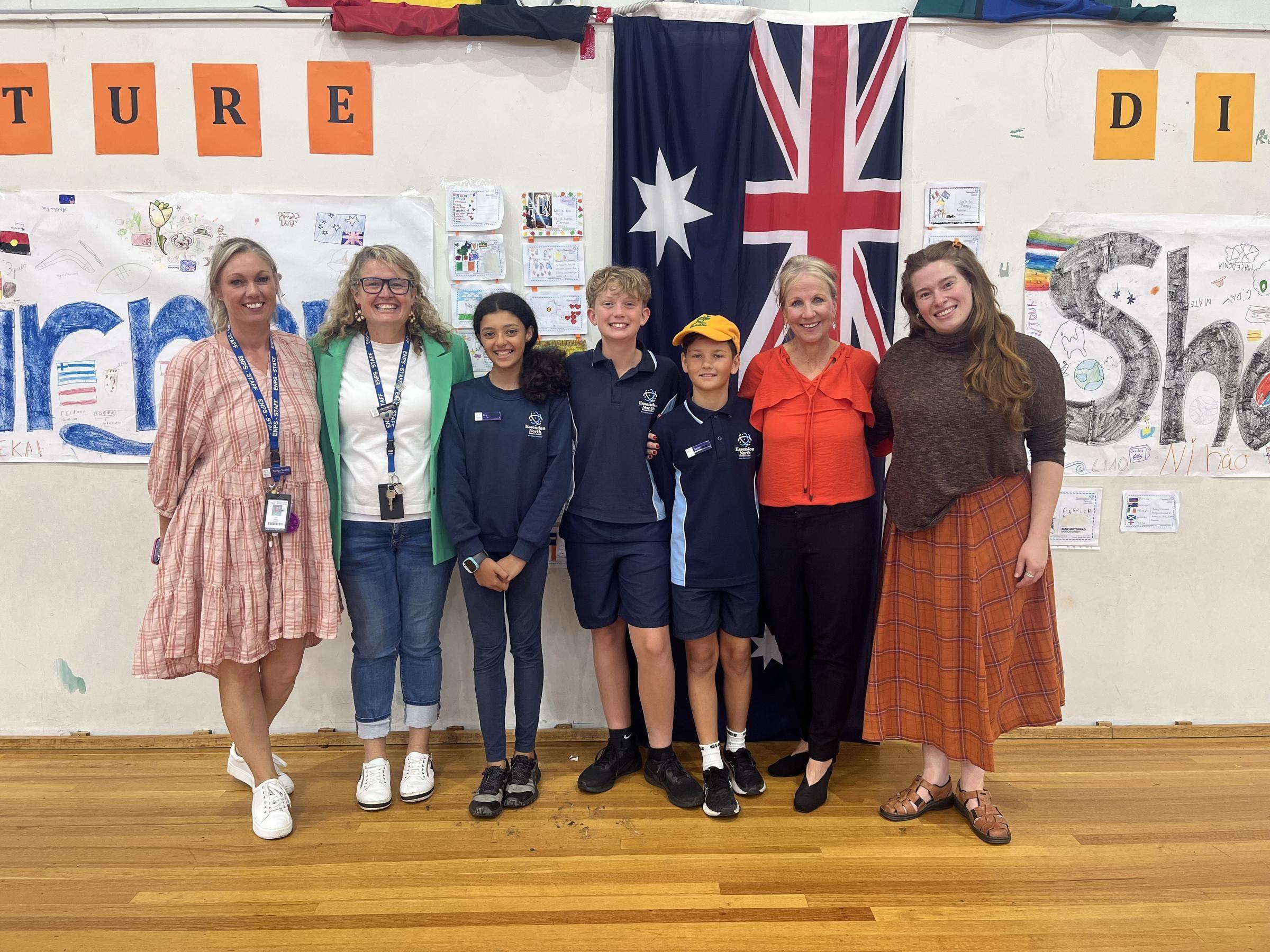
Throughout Cultural Diversity Week, we had the opportunity to celebrate and honour the unique family backgrounds, cultures, and perspectives that make our school community so special. From vibrant cultural displays to engaging discussions, each event highlighted our shared commitment to embracing diversity in all its forms.
We are incredibly grateful to our students, teachers, staff, and parents for their creativity, enthusiasm, and openness throughout the week. Your willingness to share personal stories, traditions, and experiences helped create an environment of understanding, respect, and appreciation for one another. A special highlight was the beautiful Family Postcards created by our proud ENPS families - each one a heartfelt reflection of cultural identity and belonging. Please enjoy this wonderful selection below!
(consent to publish names/photos provided)
At ENPS, we are proud to have a diverse community of families who speak a wide range of languages, including English, French, Greek, Portuguese, Spanish, Italian, Russian, Croatian, Macedonian, Serbian, Albanian, Persian, Arabic, Turkish, Kannada, Malayalam, Tamil, Telugu, Tulu, Bengali, Gujarati, Hindi, Marathi, Nepali, Punjabi, Sinhalese, Urdu, Vietnamese, Thai, Indonesian, Tagalog, Filipino, Chinese, Cantonese, Mandarin, Malay, Japanese, Korean, Oromo, and Somali.
To celebrate Harmony Day and Cultural Diversity Week, students engaged in meaningful discussions and activities that explored the importance of belonging and embracing different cultures.
Below is a snapshot of the wonderful learning and experiences shared throughout the week.
Foundation
Through the book This Love by Isobel Otter and Harriet Lynas, students reflected on how, despite our differences, we all belong at ENPS. A class discussion highlighted how people in Australia come from diverse backgrounds, each with unique traditions, celebrations, and customs. Students then participated in a Think, Pair, Share activity, where they discussed their favourite family traditions. To conclude, they illustrated a special family activity on a kinder square or circle, showcasing the different ways families celebrate, connect, and create memories together.
Year One
As part of Cultural Diversity Week, students explored and celebrated the rich variety of cultures within our classroom community. We began by discussing foods from different cultures, sharing what we eat at home, and creating a collage of a meal we would serve to visitors. This hands-on activity sparked curiosity and appreciation for different cuisines, culminating in a class picnic where students 'shared' their cultural meals.
We also watched the Cultural Diversity Week 2025 commercial, analysing the people, cultures, and events represented. Through engaging discussions and a scavenger hunt, students identified and appreciated the diversity around them. Partnered with classmates from different backgrounds, they explored similarities and differences in family traditions, religious beliefs, and special celebrations. These meaningful conversations helped students reflect on the importance of inclusivity and understanding, reinforcing the idea that while we are all unique, we all belong equally in our diverse community.
Year Two
As part of our inquiry into identity and diversity, our Year Two students explored the concept of similarities and differences. We began by reading We Are All Different, which sparked a thoughtful class discussion about what makes each of us unique and the things we have in common.
Students then engaged in a reflective activity where they illustrated or wrote about aspects of their lives, such as traditions, hobbies, family structures, and personal interests, comparing them with their peers. This activity helped them develop an appreciation for the diverse backgrounds within our classroom while recognising the values and experiences that bring us together as a community.
Year Three
As part of our inquiry into understanding and respecting different cultural and family traditions, students engaged in a series of activities to explore the meaning of culture, multiculturalism, and inclusivity. Through rich discussions, students reflected on the importance of celebrating Cultural Diversity Week, acknowledging the diverse backgrounds that make up our community. Students expressed their understanding by illustrating and writing about their favourite cultural or family traditions, sharing their perspectives on the significance of belonging.
To deepen their inquiry, students created a class Harmony Tree, symbolising unity and respect for different cultures. They explored ways to take action in shaping a more inclusive future, discussing how kindness, respect, and acceptance can contribute to a more harmonious world. Through these activities, students developed an appreciation for cultural diversity and reflected on their role in fostering a more inclusive world.
Year Four
During Cultural Diversity Week, the Year Four students engaged in learning the lyrics and actions of the AUSLAN version of I Am Australian. They also connected with the song’s message, exploring different cultures, traditions, and the importance of interconnectedness.
Year Five
As part of our learning about Cultural Diversity Week, students engaged in meaningful discussions through a See-Think-Wonder activity, sparking curiosity and reflection on multiculturalism in Australia. They explored folk tales from around the world and investigated the significance of cultural diversity using resources such as Epic! and the Australian Bureau of Statistics.
In addition to celebrating diversity, students deepened their understanding of the importance of Acknowledgement of Country. They learned how it differs from a Welcome to Country and explored ways to create their own meaningful acknowledgments. Drawing inspiration from past students' work and Aboriginal art, they reflected on the deep connection the Wurundjeri people of the Kulin Nation have with the land. Each student crafted a personalised Acknowledgement of Country, expressing gratitude and respect for the land we live and learn on. The activity concluded with a powerful reflection on why it is important for everyone to recognise and honour the traditional custodians of the land, reinforcing the value of inclusivity, respect, and cultural awareness.
Year Six
As part of our inquiry into what it means to be both an Australian and a global citizen. Students completed the Australian Citizenship test, reflecting on its requirements and significance. Following this, students wrote persuasive pieces expressing their opinions on the test, considering whether it effectively measures a person’s readiness for citizenship.
To broaden their understanding, students compared Australian citizenship laws with those of another country, analysing similarities and differences. This exploration led to meaningful discussions about identity, belonging, and multiculturalism. Finally, students reflected on their own cultural strengths and traditions, considering how these are shaped by their families and communities. Through this inquiry, they gained a deeper appreciation of the diverse perspectives that contribute to both national and global citizenship.
Lunch Club
A big shout out to our wonderful Education Support staff, who also planned and provided a range of fun, engaging and cultural Lunch Club craft activities for students across the week in support of this special occasion!
Staff Lunch
Our staff also celebrated diversity together by sharing a special lunch on Thursday. Everyone was invited to to bring a cultural dish for others to enjoy, and we loved sampling foods from the many cultures at here ENPS!
Last week also marked Persian New Year, and the United Nations' International Day for the Elimination of Racial Discrimination (21st March). Many of our ENPS families have now also commenced fasting for the holy month of Ramadan.
Ramadan is a sacred month for the Muslim community. Members of the Muslim community may observe the period by fasting from food and drink between dawn and sunset, with a focus on devotion and spiritual contemplation. Eid al-Fitr, known as the ‘feast of fast-breaking’, marks the end of the holy month of fasting and is celebrated by feasts and gift-giving among family and friends.
We wish a Blessed Ramadan (Ramadan Mubarak) to all those observing.
Nowruz (the New Day) is the Persian New Year and the first day of Spring in the northern hemisphere, falling on the March equinox. In Persian it is called New Day or No-Ruz whereas the spelling in English may vary (Noruz, Nowrooz, Norouz). Thank you to our parent representative Mahmoud, and students Maya, Milan, Anisa, Matiyar, Soren, Sara, Ariana and Elsa for sharing their cultural heritage and the significance of the Persian New Year celebrations at assembly on Friday. A copy of their speeches are featured below. Also a big thank you to Aylin's (2CU) and Soren's (4CG) families for sharing these photos of their Nowruz Haft-Sin tables with us!
Mahmoud's speech
This year theme "Embrace the journey, shape our future" resonates with me by trying to discover and dissolving to the culture I'm living in while my heart and soul is still with the culture I grew up in. Being a migrant and second language is a challenge and that is to know and adopt to the new culture. Australia is a great diverse culture country such as our Essendon North Primary School.
Students' speech
Nowruz
The United Nations has marked 21st March as International Nowruz Day, commemorating a holiday that sees millions around the world eating, dancing and furiously spring-cleaning the house from top-to-toe, called “khane tekani” in Iran. Nowruz, meaning ‘new day’ in Persian, falls on the first day of the Persian calendar as well as Spring, and observes the end of darkness and the rebirth of nature.
What is it?
Nowruz, the Persian New Year, is a 3,000-year-old celebration of spring and lasts for 13 days and is celebrated by around 300 million people across the world.
How is it celebrated?
Festivities typically involve large gatherings of friends and family, street festivals, bonfires, fireworks, poetry and folk music and lots of food.
Haftsin
Most spreads will include a haft-sin, a display of seven ingredients beginning with the letter ‘S’ in Persian. Each symbolises a different concept, such as health (garlic), patience (vinegar) and beauty (apple) in Iran. You can also expect an elaborate tray with sabzeh (lentil sprouts grown specially for Nowruz), nuts, sweets, dried fruits and colourfully painted eggs.
Chaharshanbe Suri (Fire Festival)
Among all of the ancient Persian festivals, perhaps, Chaharshanbe Suri is the most exciting of them all! It involves singing, firecrackers, romance, and jumping over fire!
Literally meaning “Wednesday Feast”, it is a celebration of the eve of the last Wednesday of every year. This celebration dates back to ancient Persian festivals when fire, air, water, and earth were revered as the four holy elements. Qashoq Zani, literally meaning “Spoon Banging”, is happening on the late evening of the fire festival. This tradition in Iran is curiously very similar to Trick or Treat at the time of Halloween in western culture. During this ceremony, children use a piece of large cloth to cover their faces and as they are beating on a small bowl with a spoon, they go door to door asking for treats. In some cases, a boy is in love with a girl in a house. He covers himself with a veil and goes to the door with the spoon and bowl. If the girl loves him back, she will put some sweets or nuts in the bowl. However, if she does not like the boy, she splashes water over him to drive him away!
Sizdah-bedar (Nature Day)
Sizdah-bedar is an Iranian festival tradition, celebrated on the thirteenth day of the Norouz. Iranians have a tradition of spending the day in nature or outdoors on the 13th day of Nowruz. ''Sizdah-'' means thirteen, and ''-bedar'', means to get rid of, i.e "getting rid of thirteen".
A ritual performed at the end of the picnic day is to throw away the ''Sabzeh'' from the Norouz Haftsin table. The sabzeh is supposed to have collected all the sickness, pain and ill fate hiding on the path of the family throughout the coming year! Another tradition on the 13th, is the knotting of blades of grass by unmarried girls in the hope of finding a companion. The knotting of the grass represents love and the bondage of a man and a woman.
We are so grateful when our ENPS families share their cultural celebrations with us and invite you to do the same. Please contact us essendon.north.ps@education.vic.gov.au if you wish to share your cultural celebrations in our newsletter throughout the year.
Special Assembly
Friday’s school assembly was an unforgettable event, hosted by our passionate School Captains, Sam, Engy, and Astin. Sharon McWhinney also had the privilege to work with the school House Captains in creating a collective group personal Acknowledgement of Country, as seen below:
As house captains we acknowledge the traditional custodians of the land where we meet, learn and play, The Wurundjeri people of the Kulin Nation. We pay our respects to elders past, present and emerging.
At Essendon North Primary School, we respect all people of different cultures, backgrounds and ethnicities.
We believe that everyone has a place in this world and should be treated equally with peace and harmony.
Australia is a multicultural country in which we stand on sacred land,
There are over 300 different cultural backgrounds which we should embrace and celebrate.
So, let’s acknowledge who we are at ENPS; caring, kind, brave, bold and respectful.
No matter who we are.
We are always connected by the land Biik, the water Baan, the wind Gurrin and the fire Wiin.
A huge thank you to our guest speakers at assembly for bravely sharing their cultural learning experiences, stories, and knowledge, your insights were truly inspiring! Celebrating the rich diversity of talent within our school was both inspiring and entertaining. Student speakers included Maeve, Audrey, Mabel and Saskia from Year One, Liyana, Aaliyah, Sienna, Ilena and Zoe from Year Two, Summer, Leah, Evie and Emma from Year Three, Vini from Year Four, Adem, Zadie, Kareem, Andriano and Yuvee from Year Five and Jordan and Naomi from Year Six.
We were also treated to Yuvee's (5EG) performance of a traditional Sri Lankan called "Gajaga Wannama: The Majestic Dance of the Elephant"!
Gajaga Wannama is a traditional Sri Lankan dance inspired by the majestic movements of an elephant. It symbolises strength and grace, celebrating the deep cultural connection between elephants and Sri Lankan heritage. Thank you so much for sharing with us Yuvee, we loved your performance!
One of the most special moments of the assembly was the entire school community coming together to sing We Are Australian and joining in the fun of dancing to Bollywood (thanks Anusha - Anya’s mum) and Macarena, led by our energetic Year One students. The positive energy and joy were contagious!
Cultural Diversity Week has provided a beautiful opportunity for us to celebrate our unique traditions and stories, and together, embrace the differences that make us special. At ENPS, we celebrate and embrace diversity, which strengthens our community and nurtures a global mindset, uniting a wealth of cultures, traditions, and perspectives.
Thank you for being part of this vibrant and diverse community. Let’s continue to celebrate our differences and grow together.
Warm regards,
The ENPS Community Engagement and Cultural Inclusion Team

